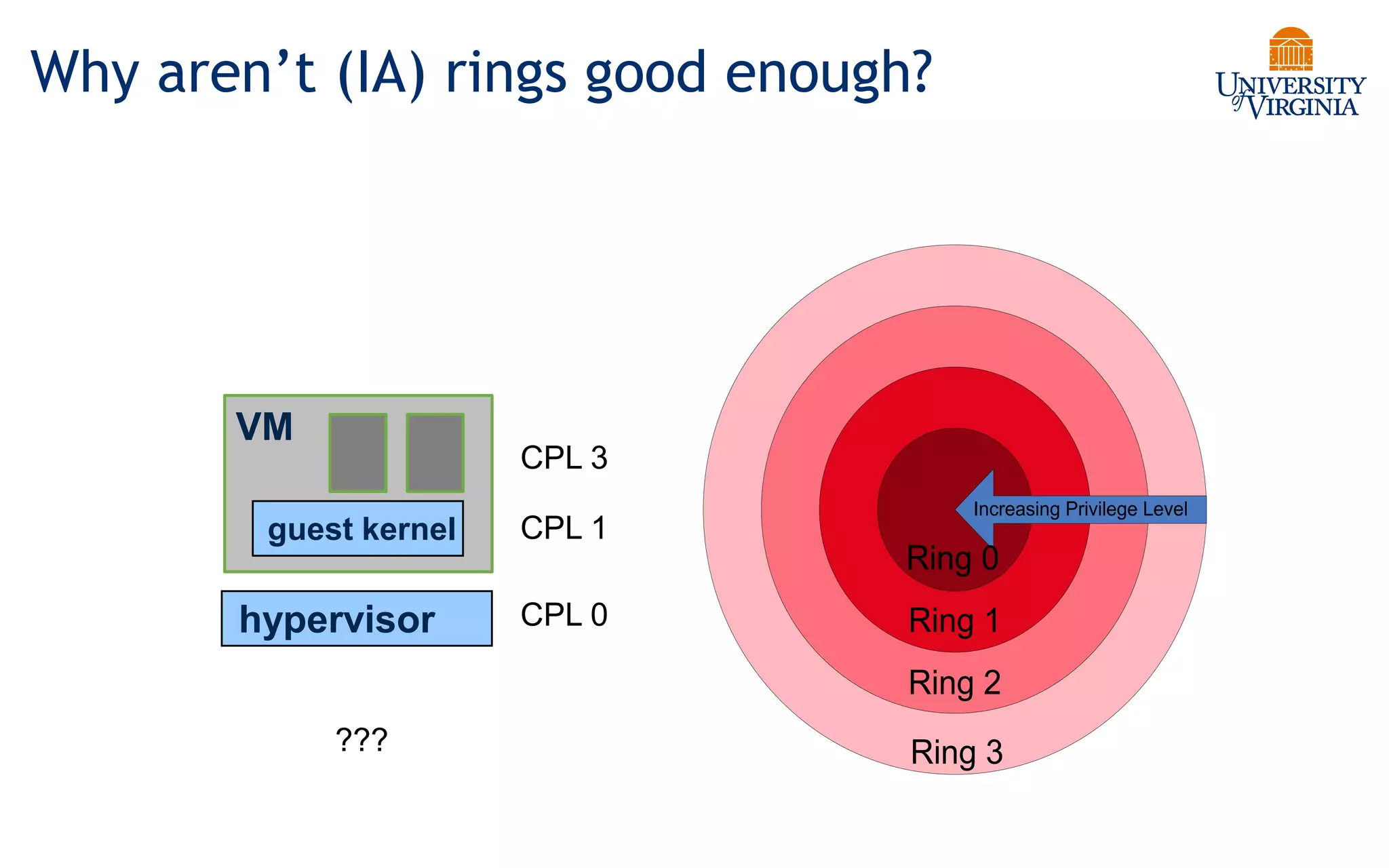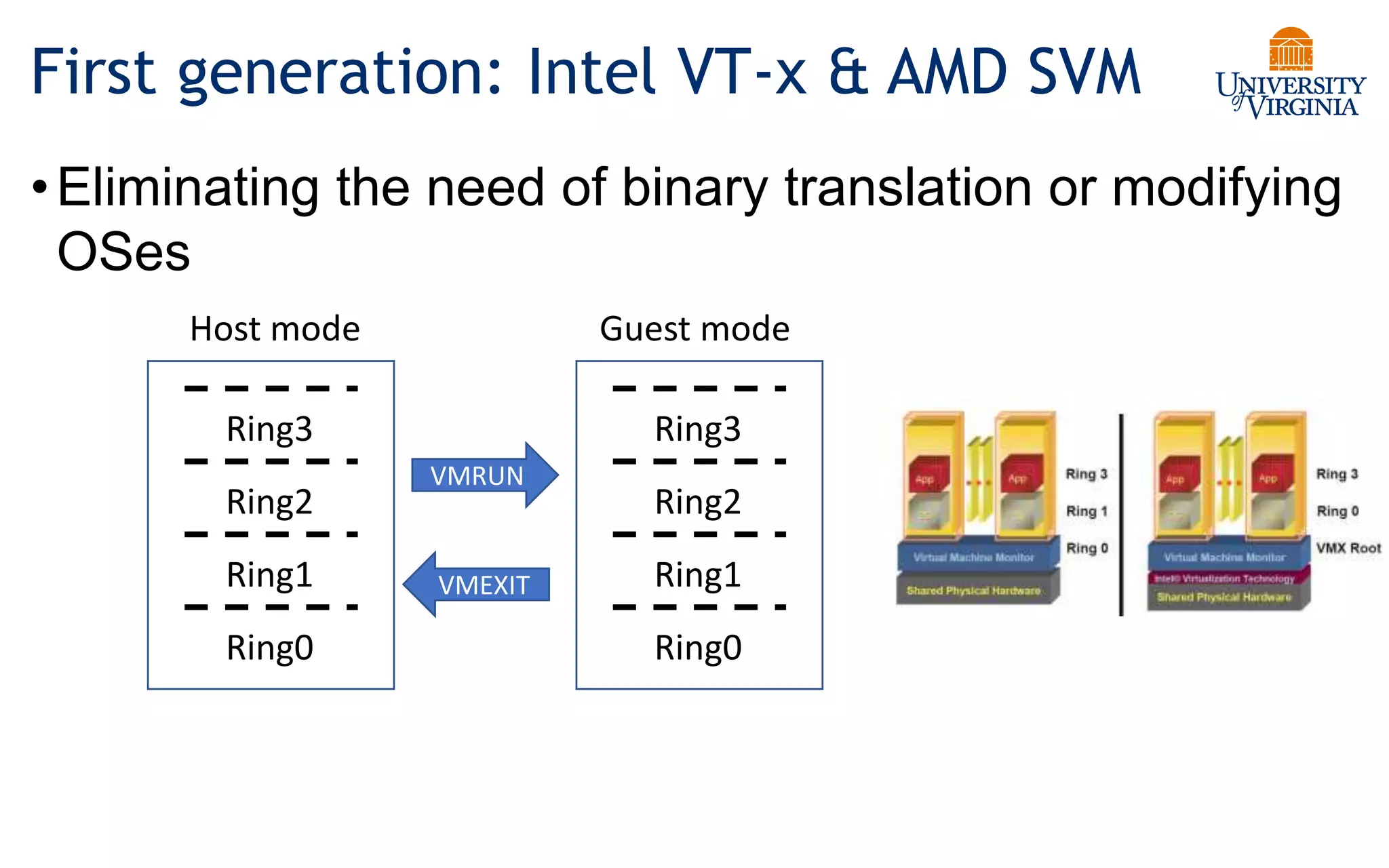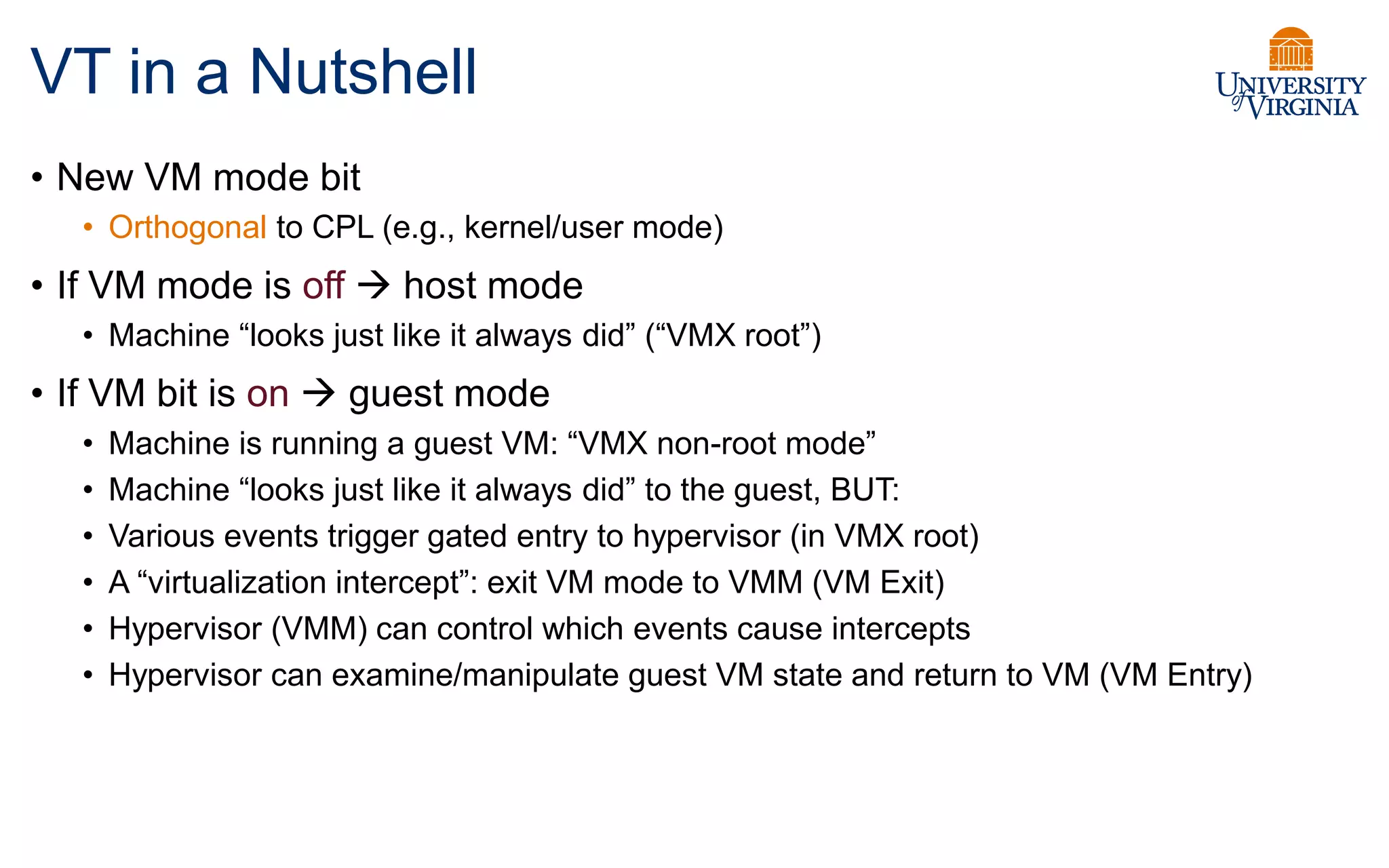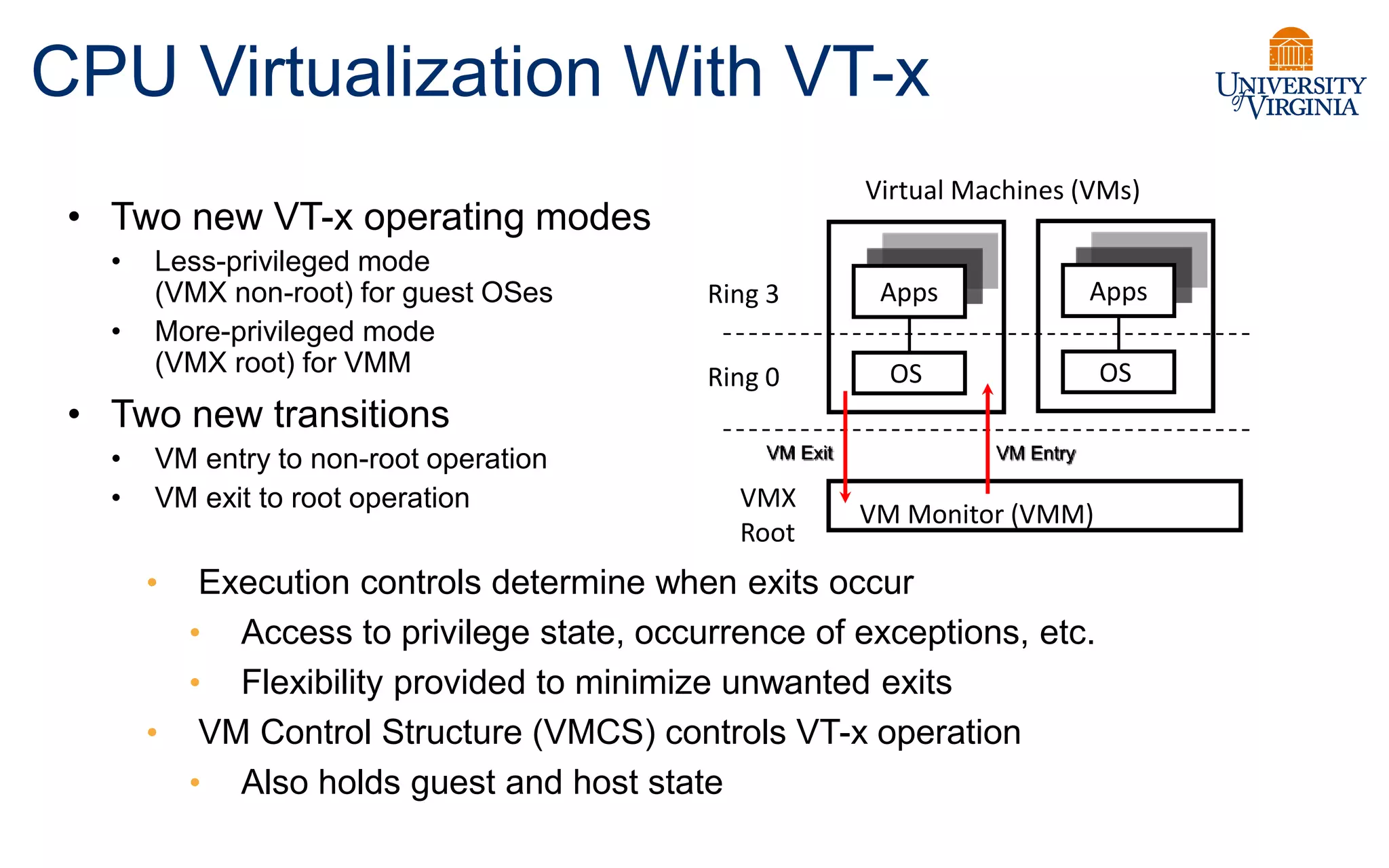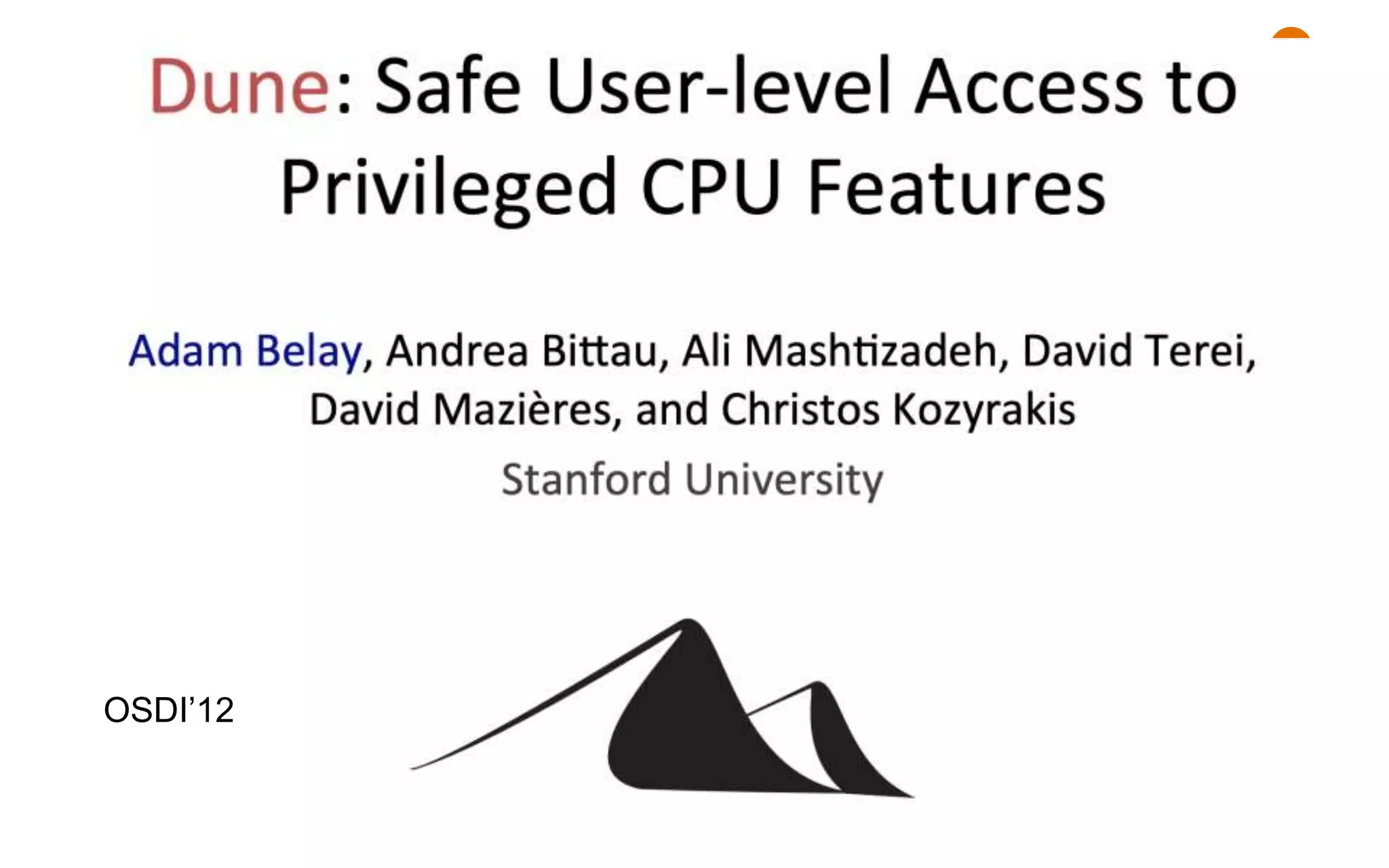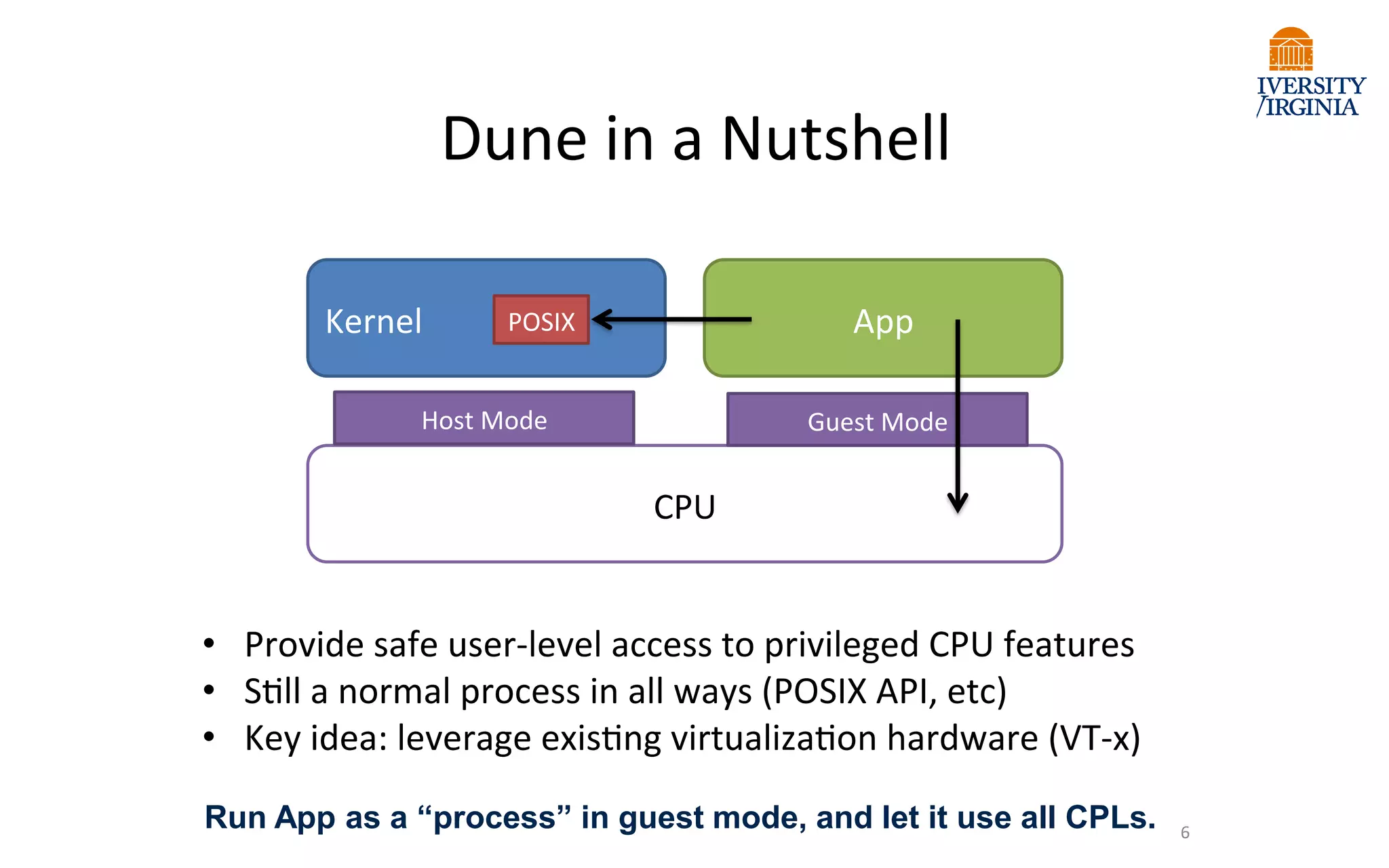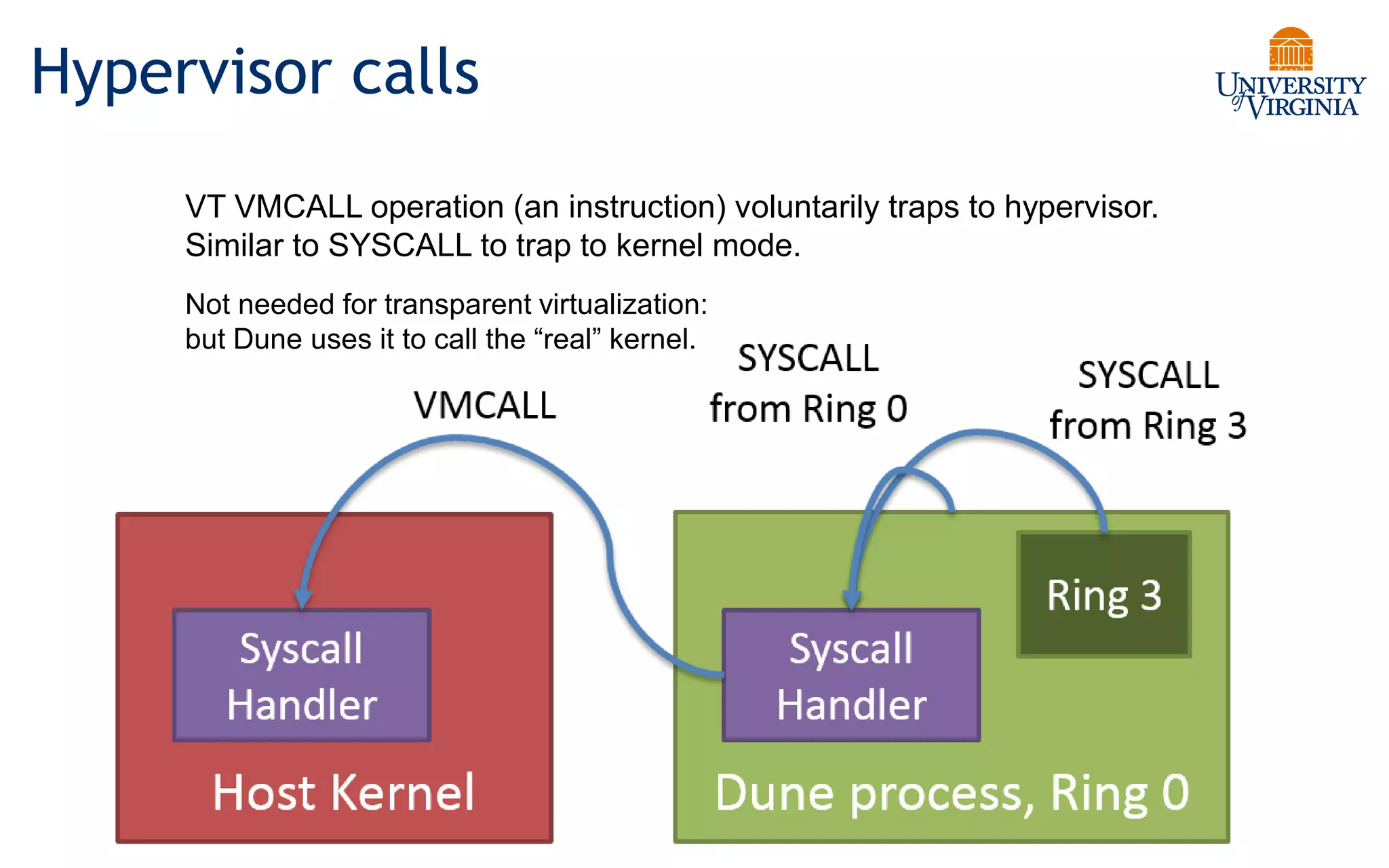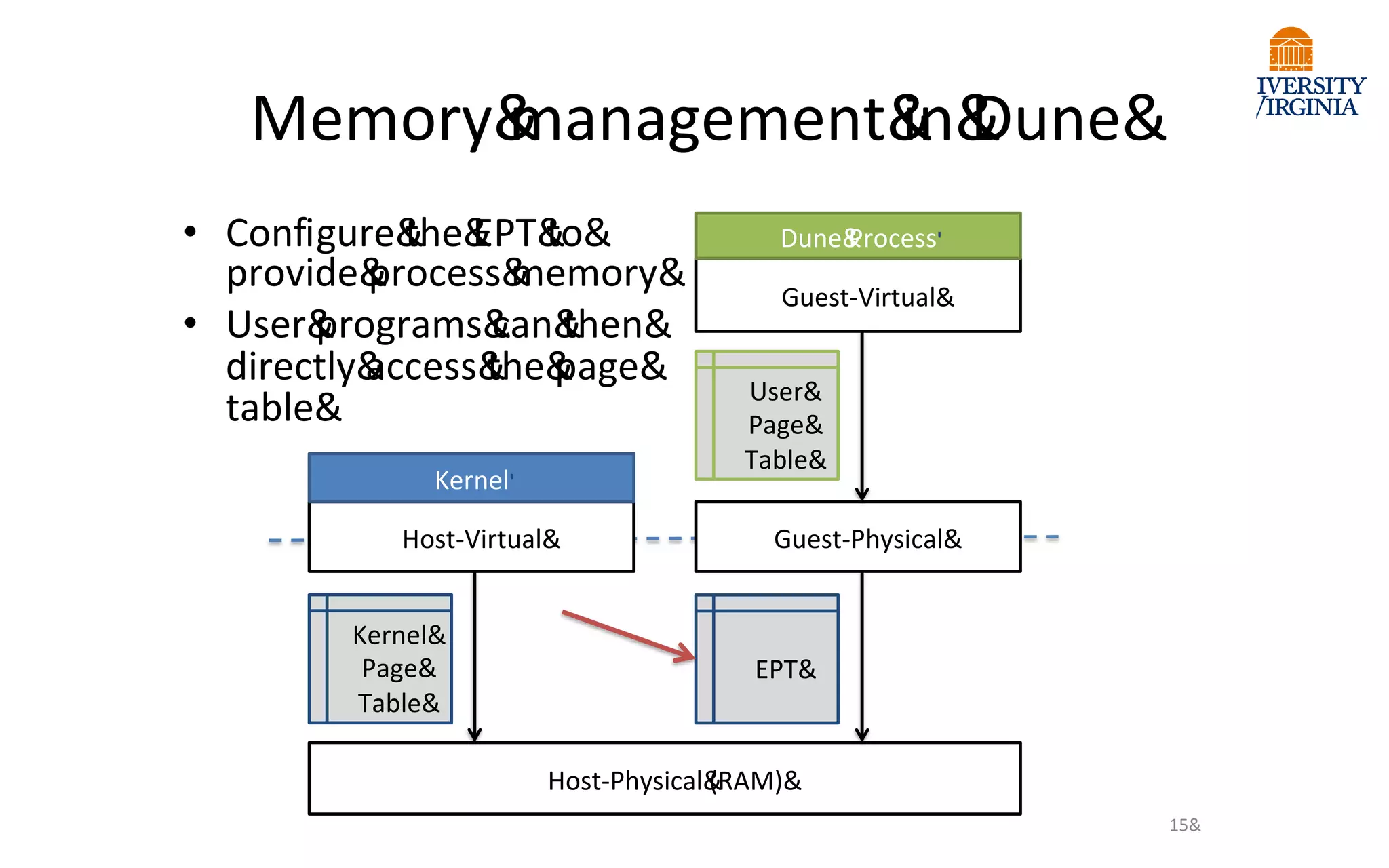Virtualization allows multiple operating systems to run on a single physical system by sharing underlying hardware resources. It provides flexibility for users, amortizes hardware costs, and isolates separate users. Early virtualization approaches required binary translation or modifying guest operating systems to address challenges posed by the x86 architecture. Modern virtualization leverages hardware extensions like Intel VT-x and AMD-V that introduce a new virtual machine mode to allow guest operating systems to run unmodified while providing hooks for the hypervisor to control privileged operations and resources. This improves performance over earlier software-only approaches.
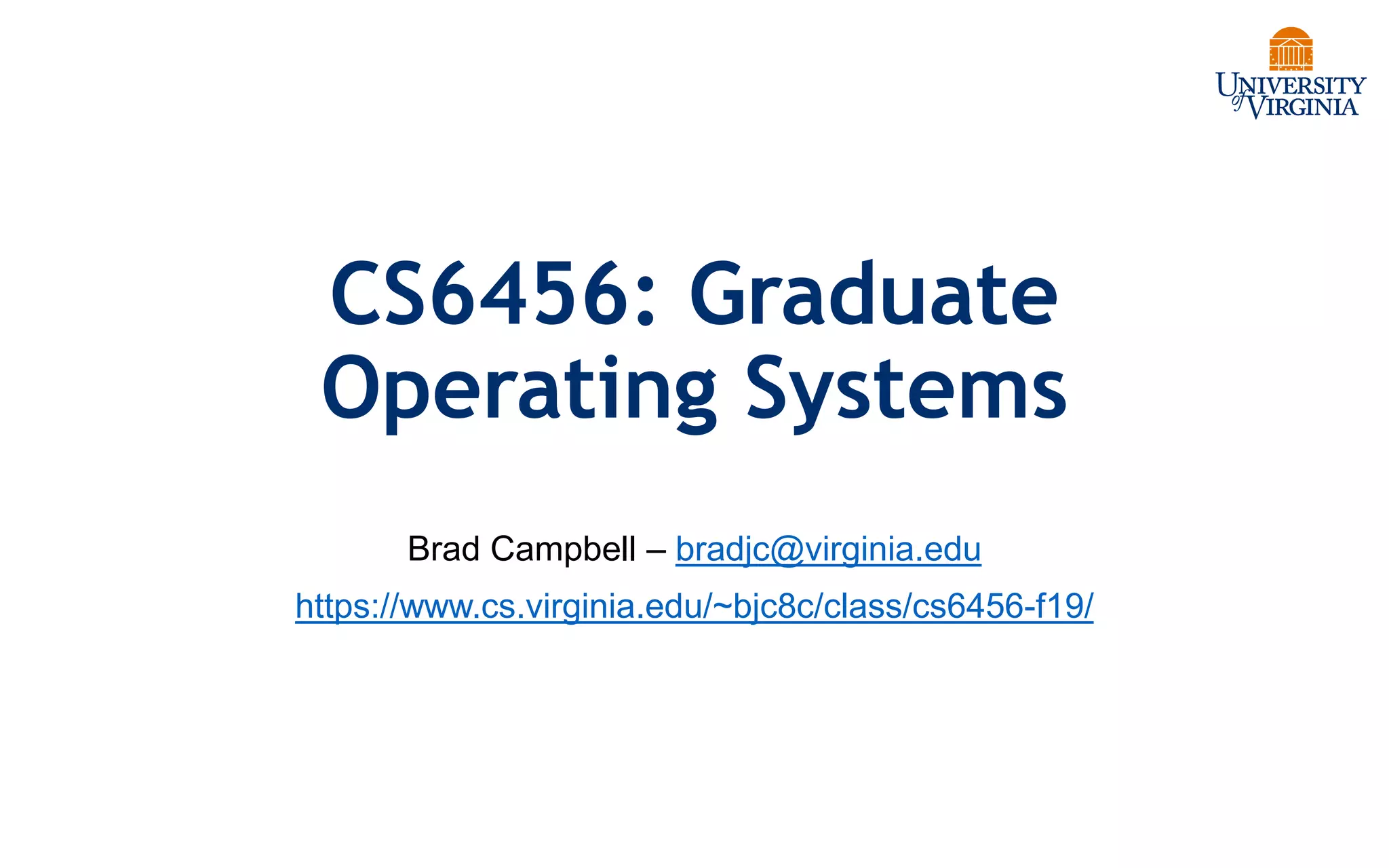
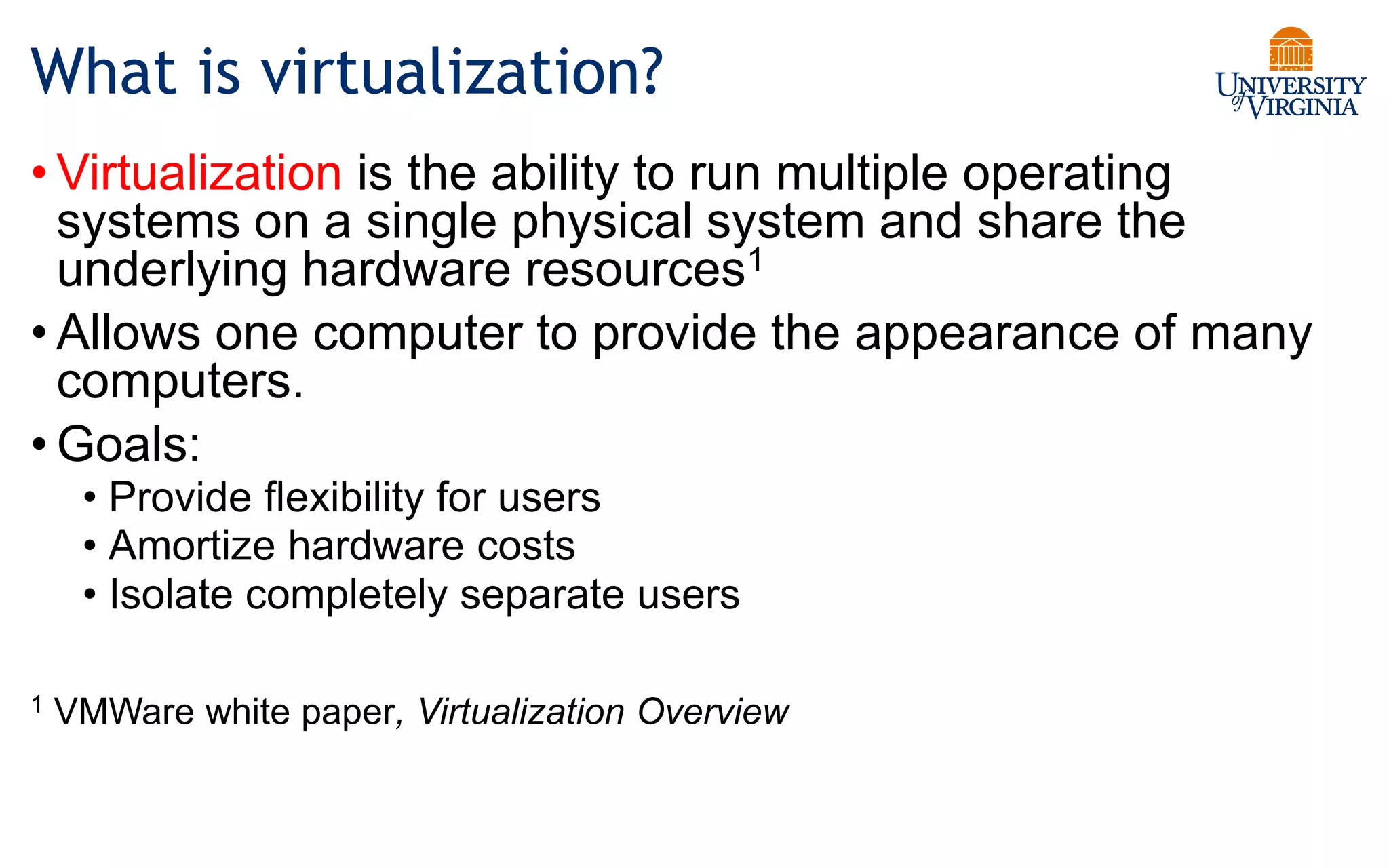

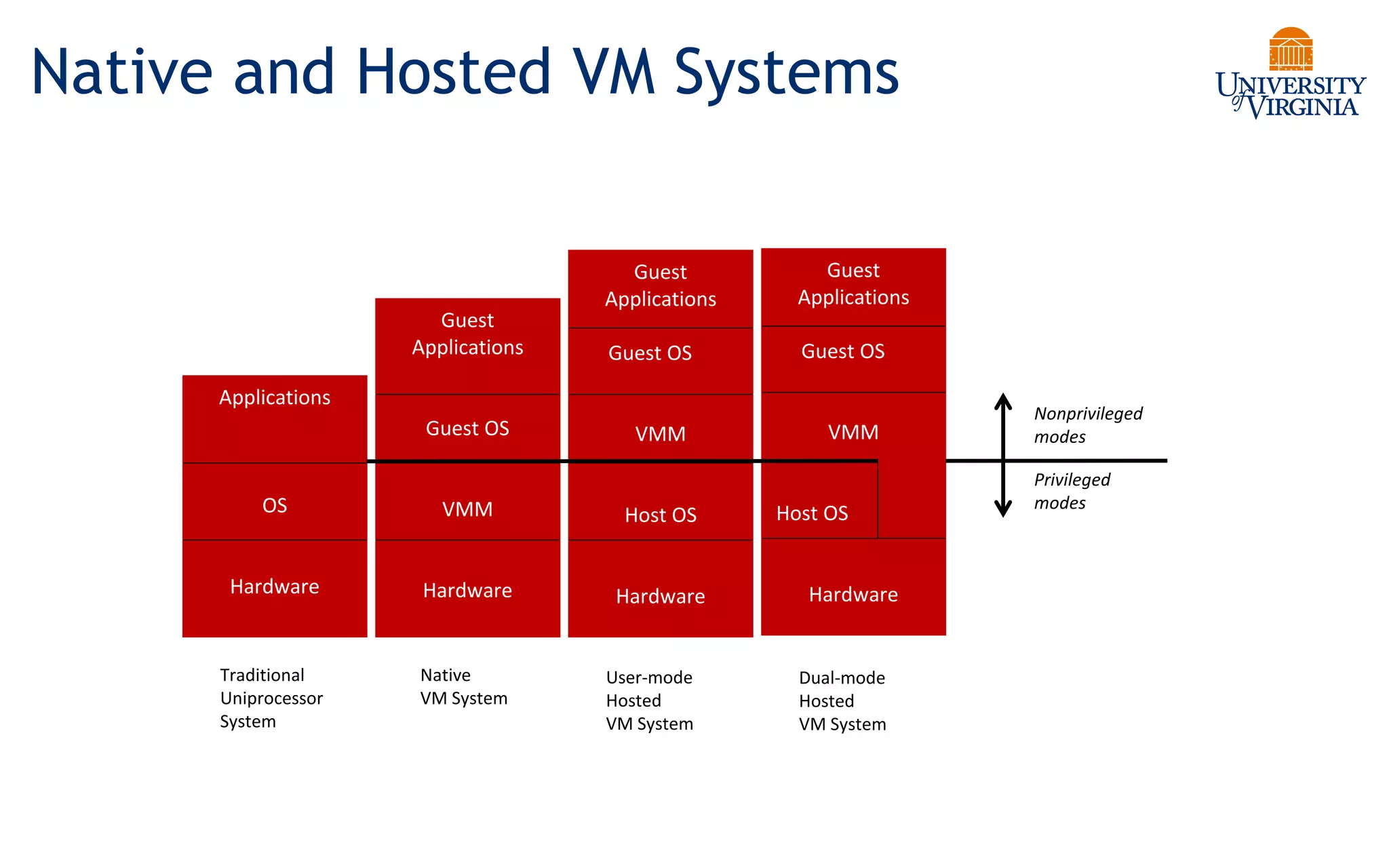
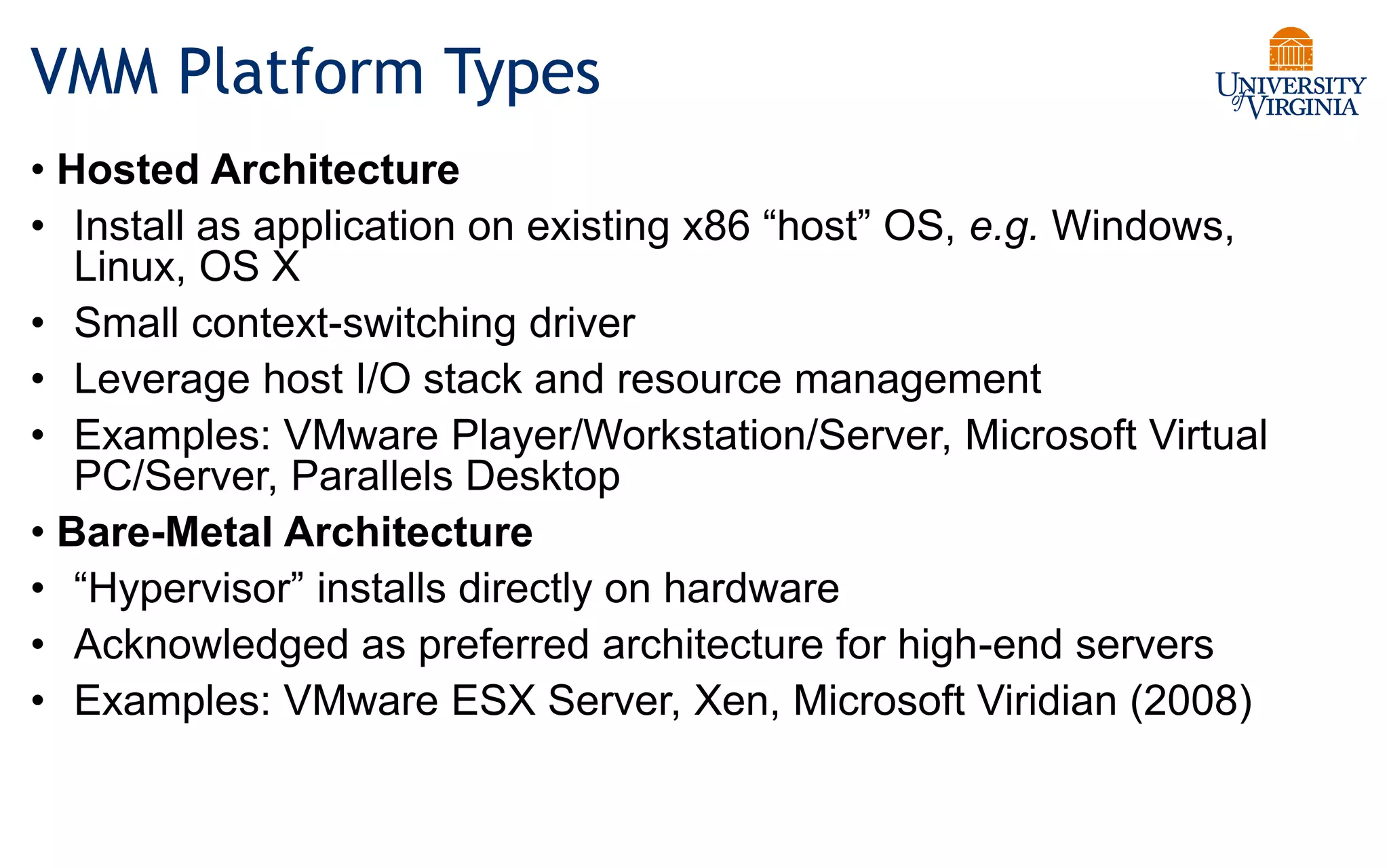

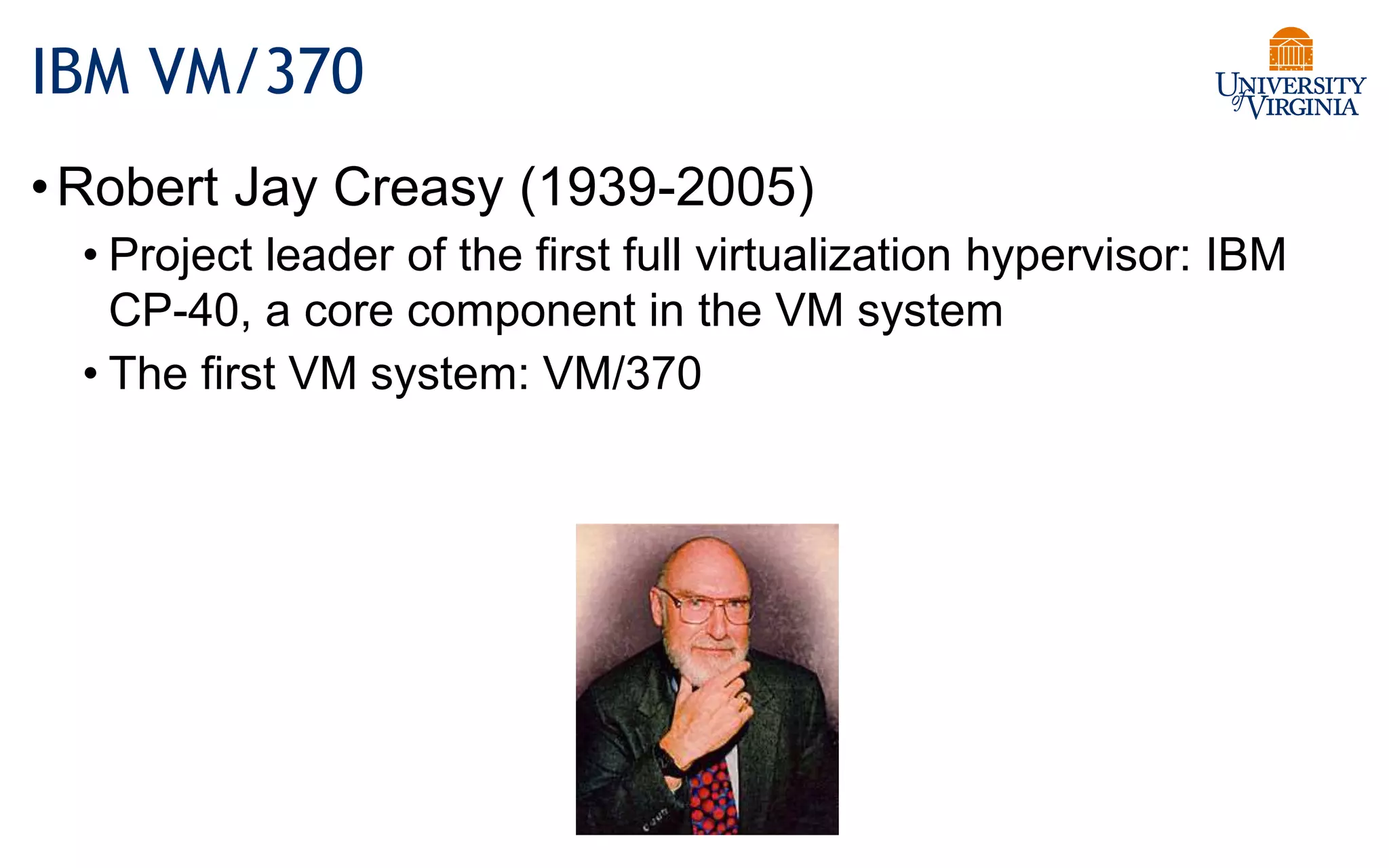
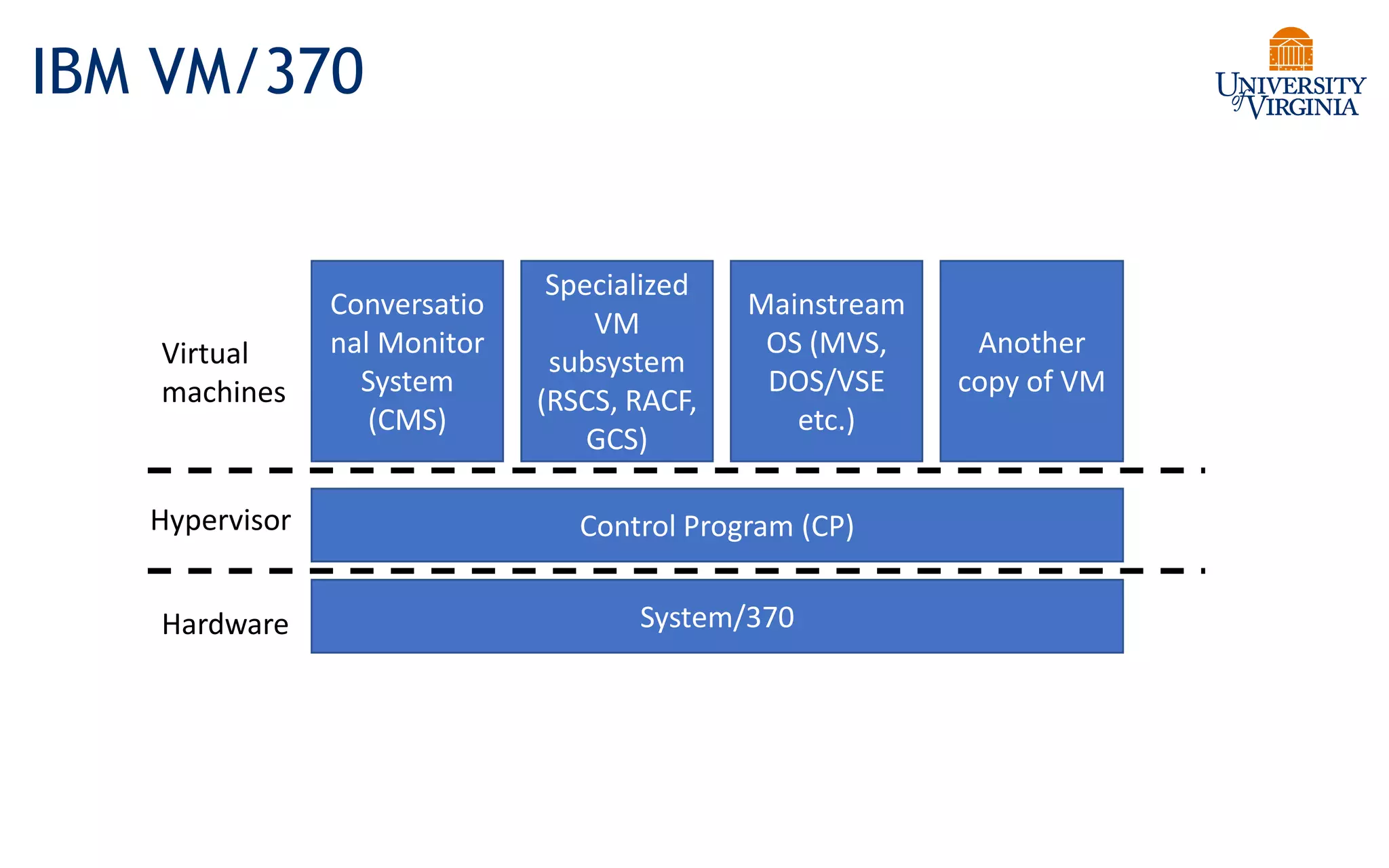
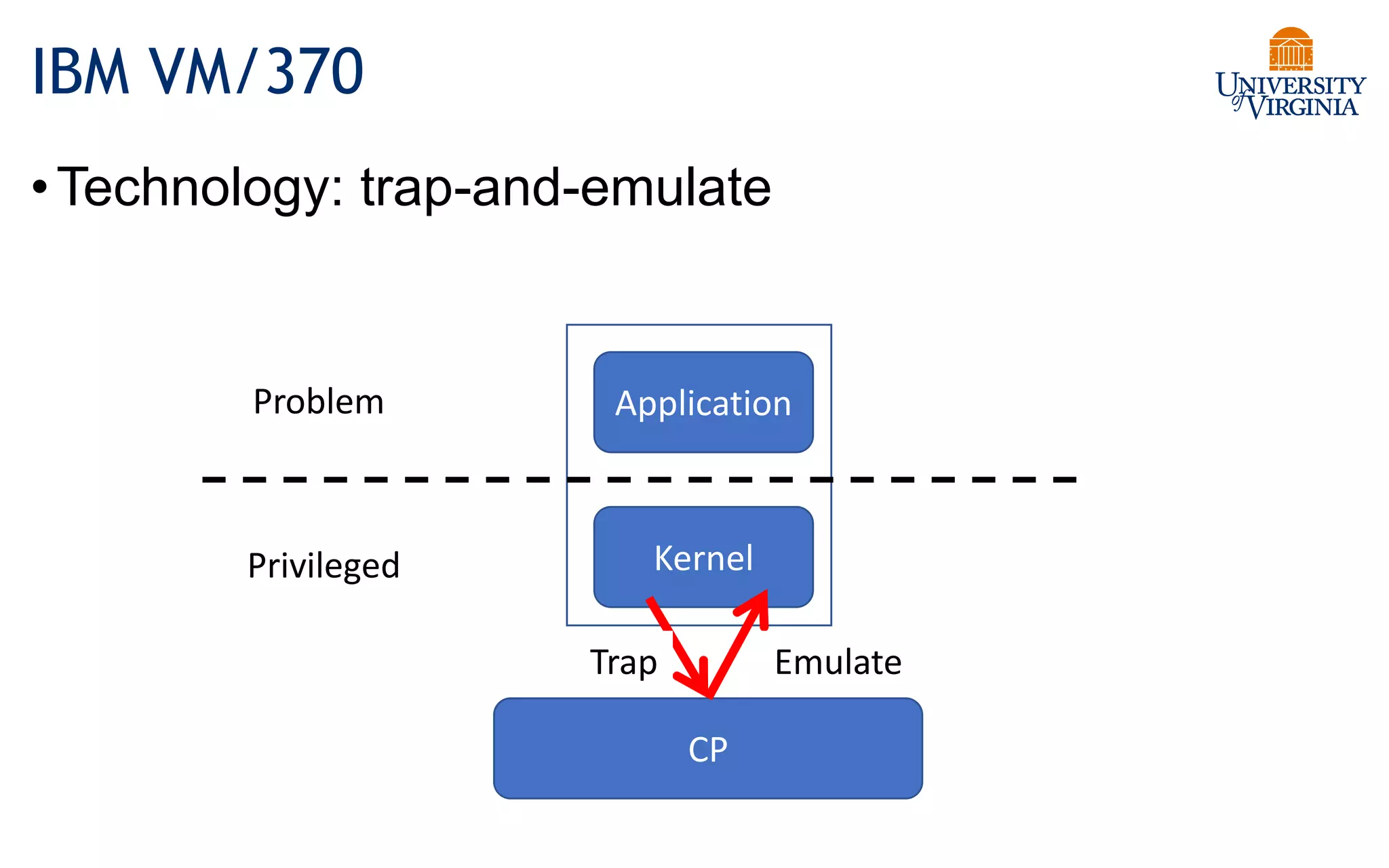

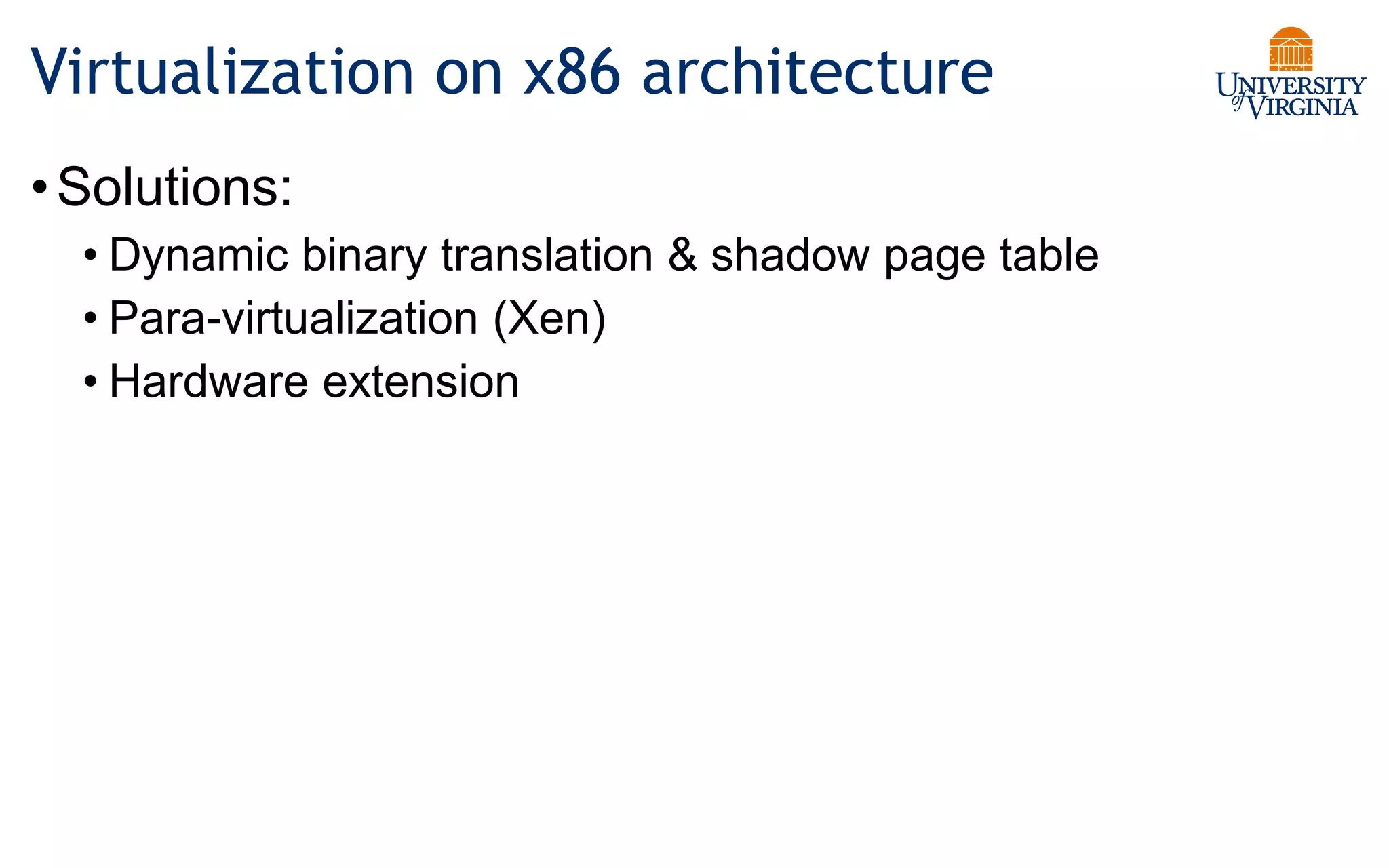
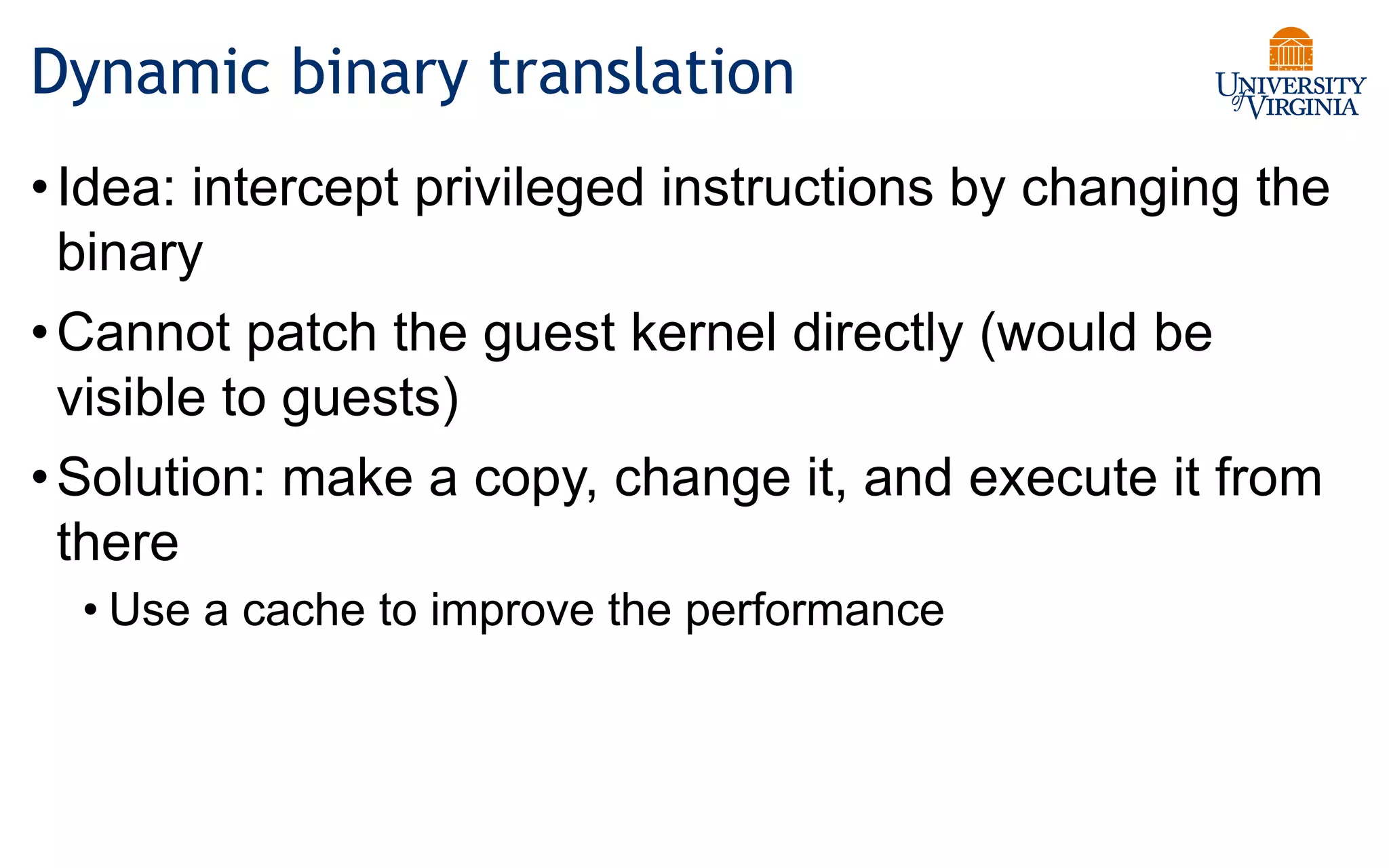
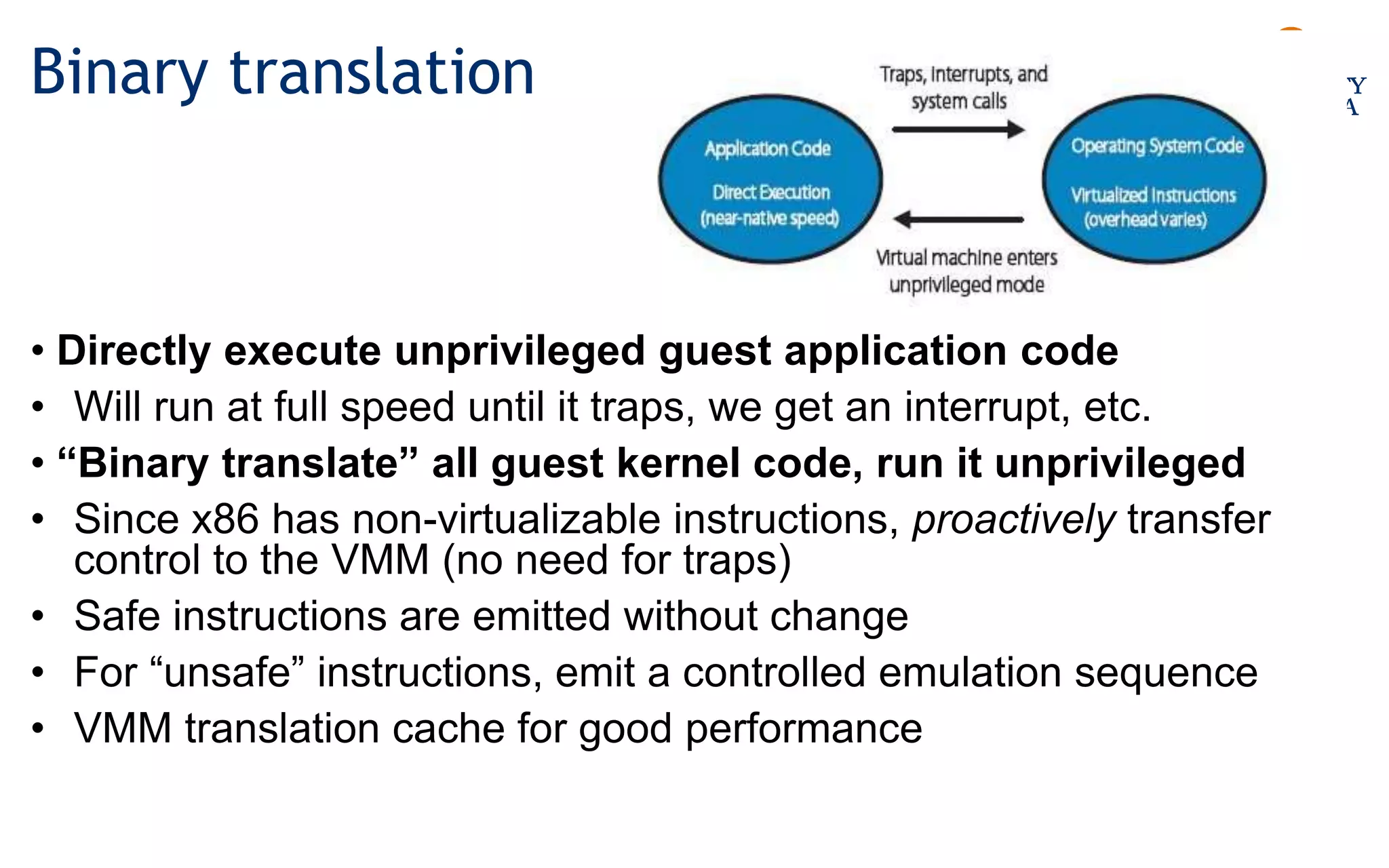
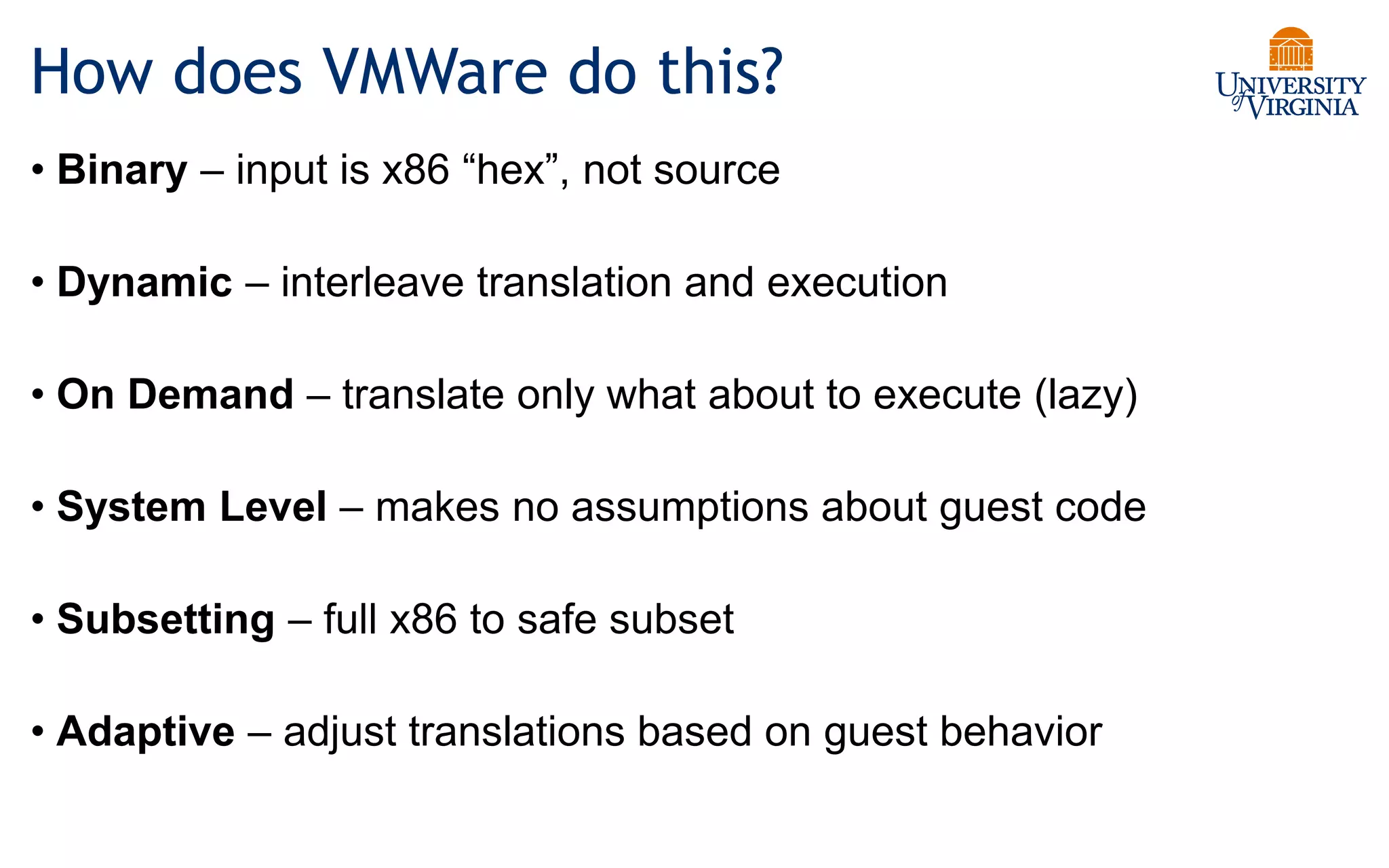
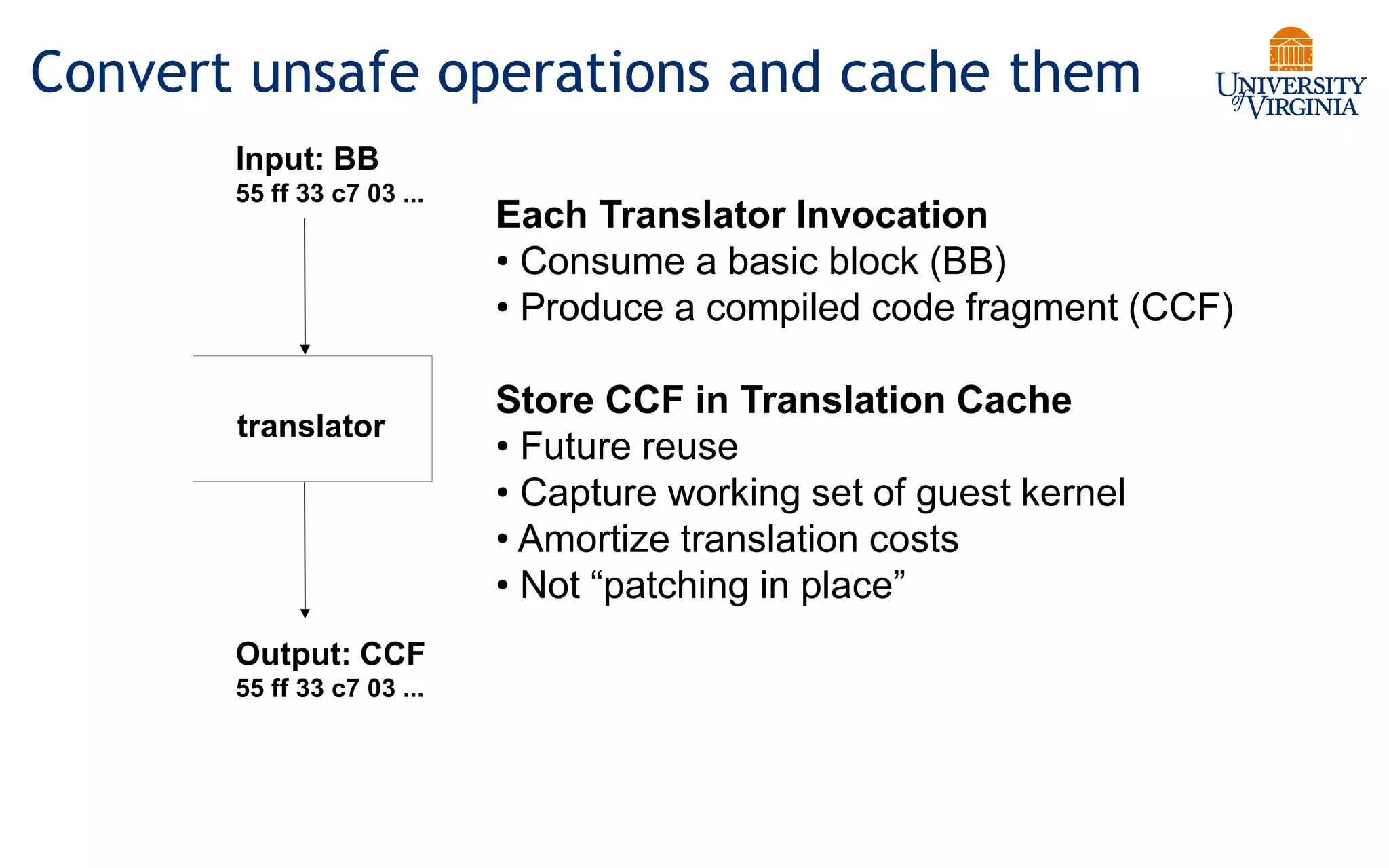

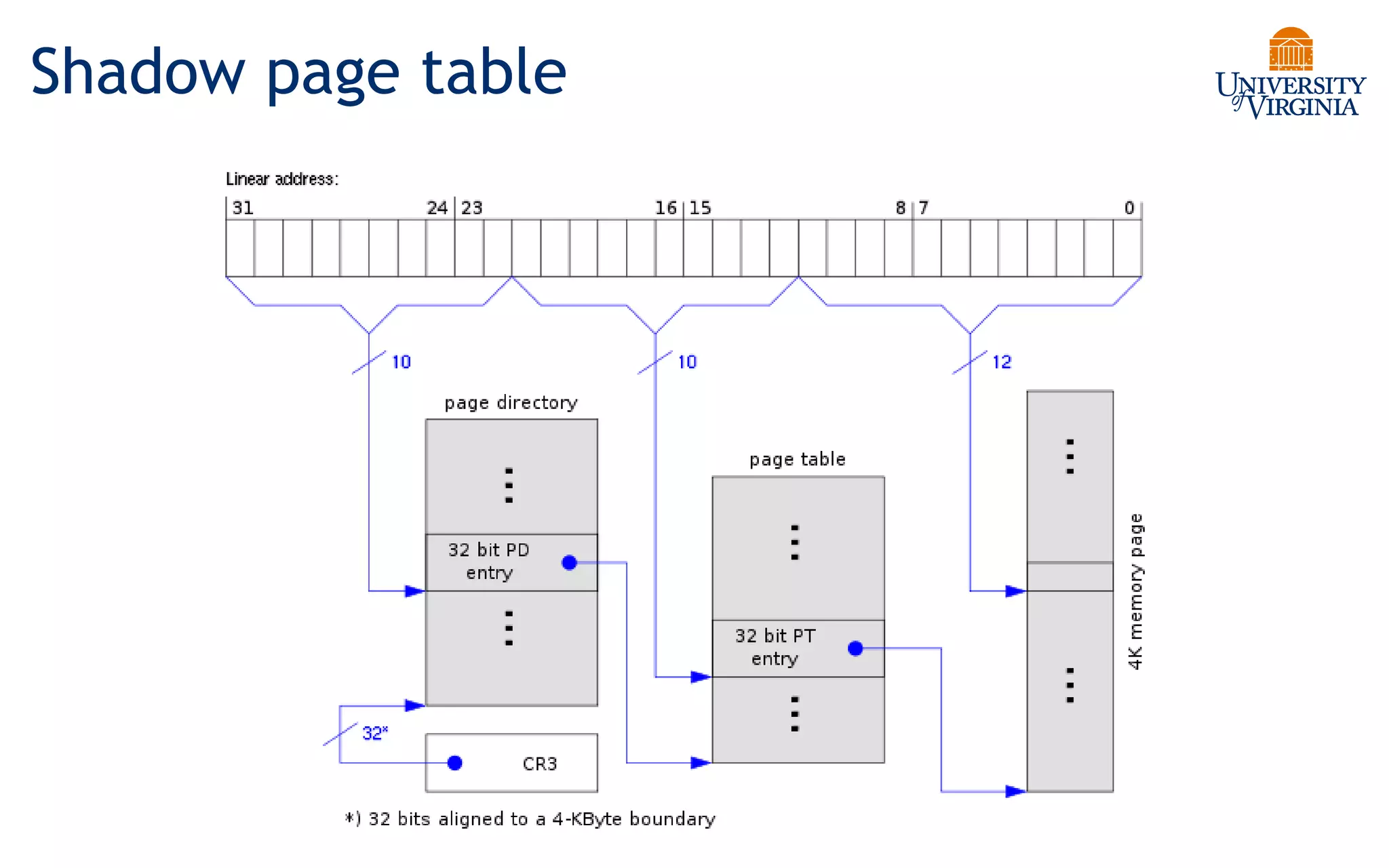
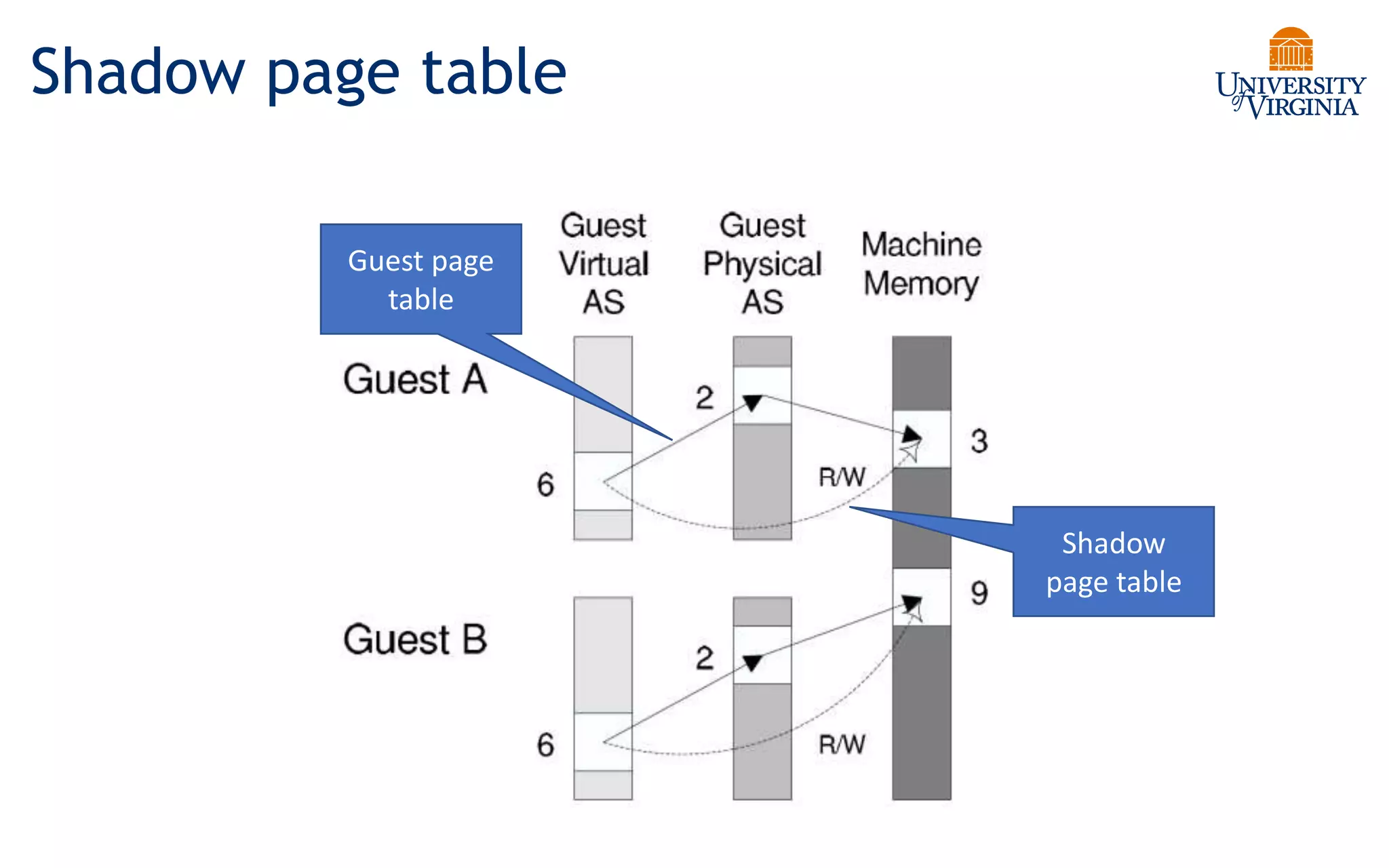
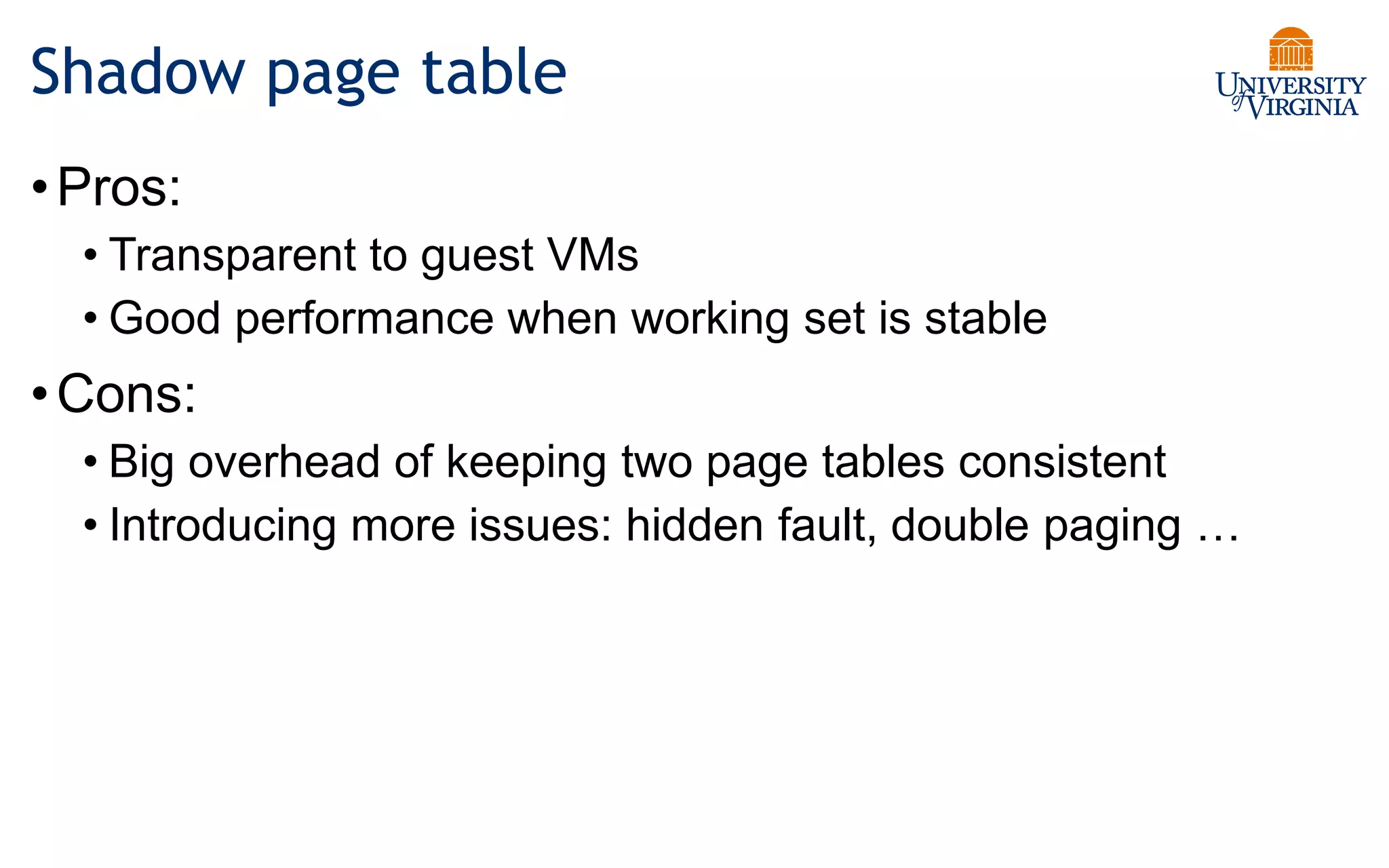
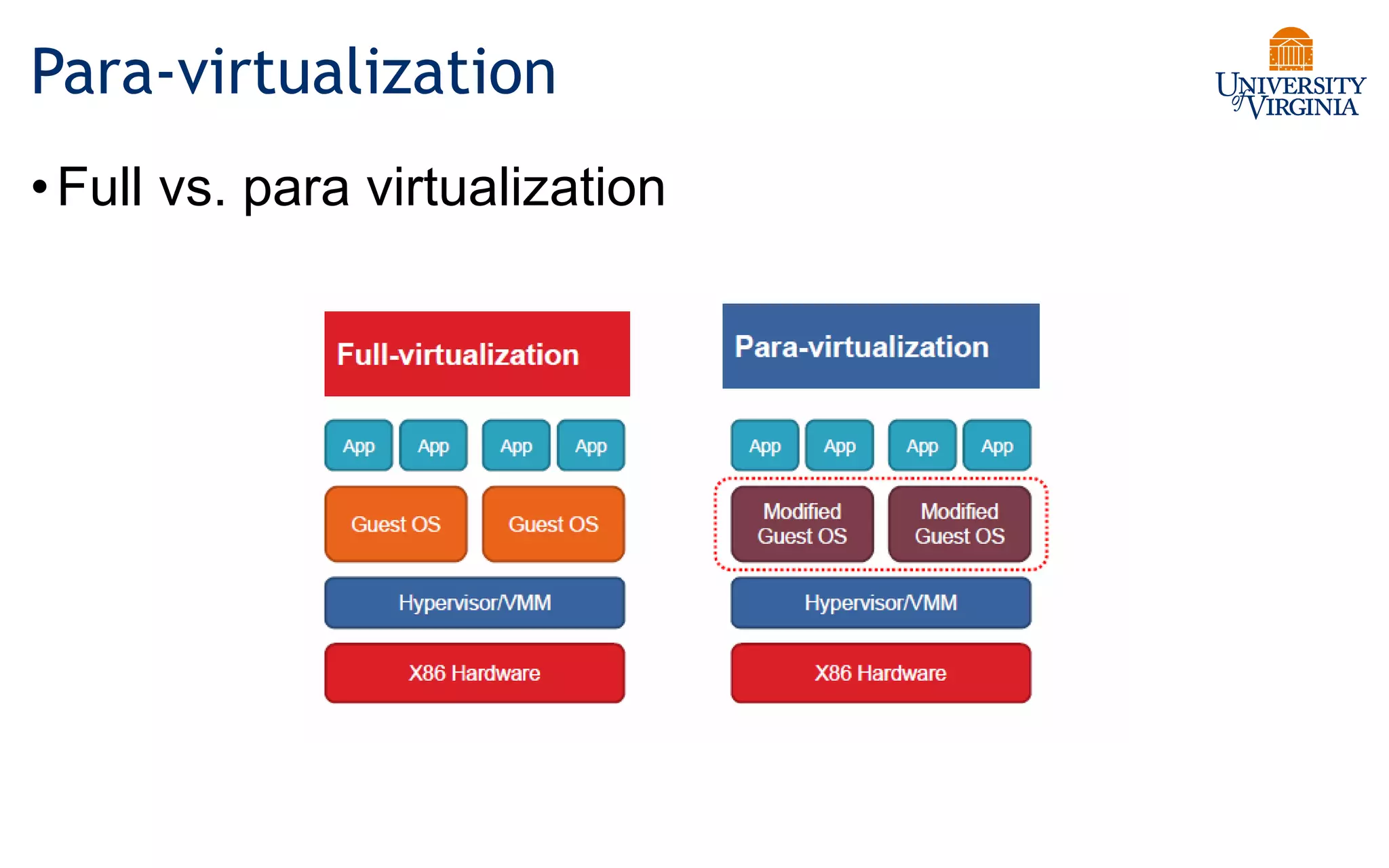
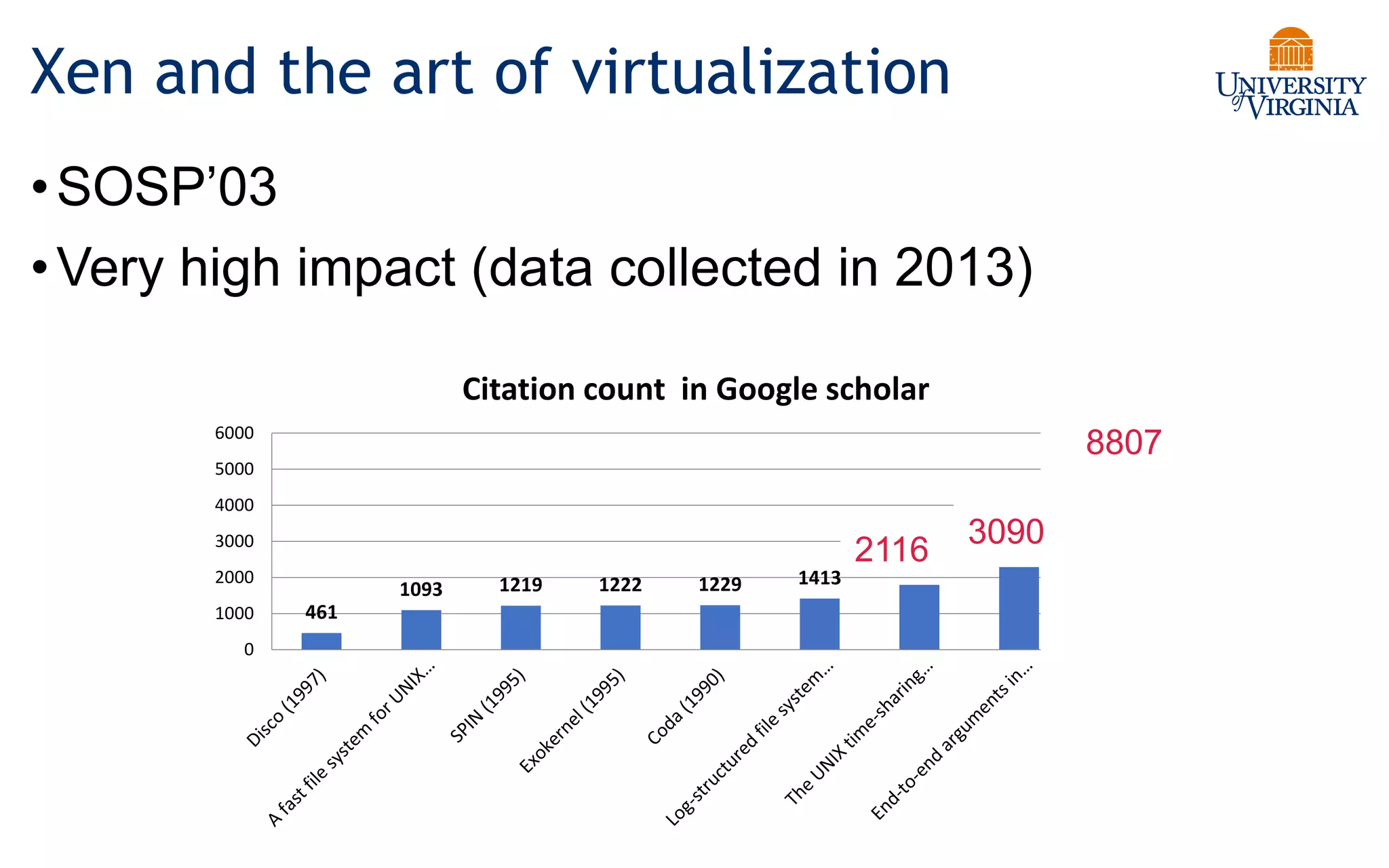
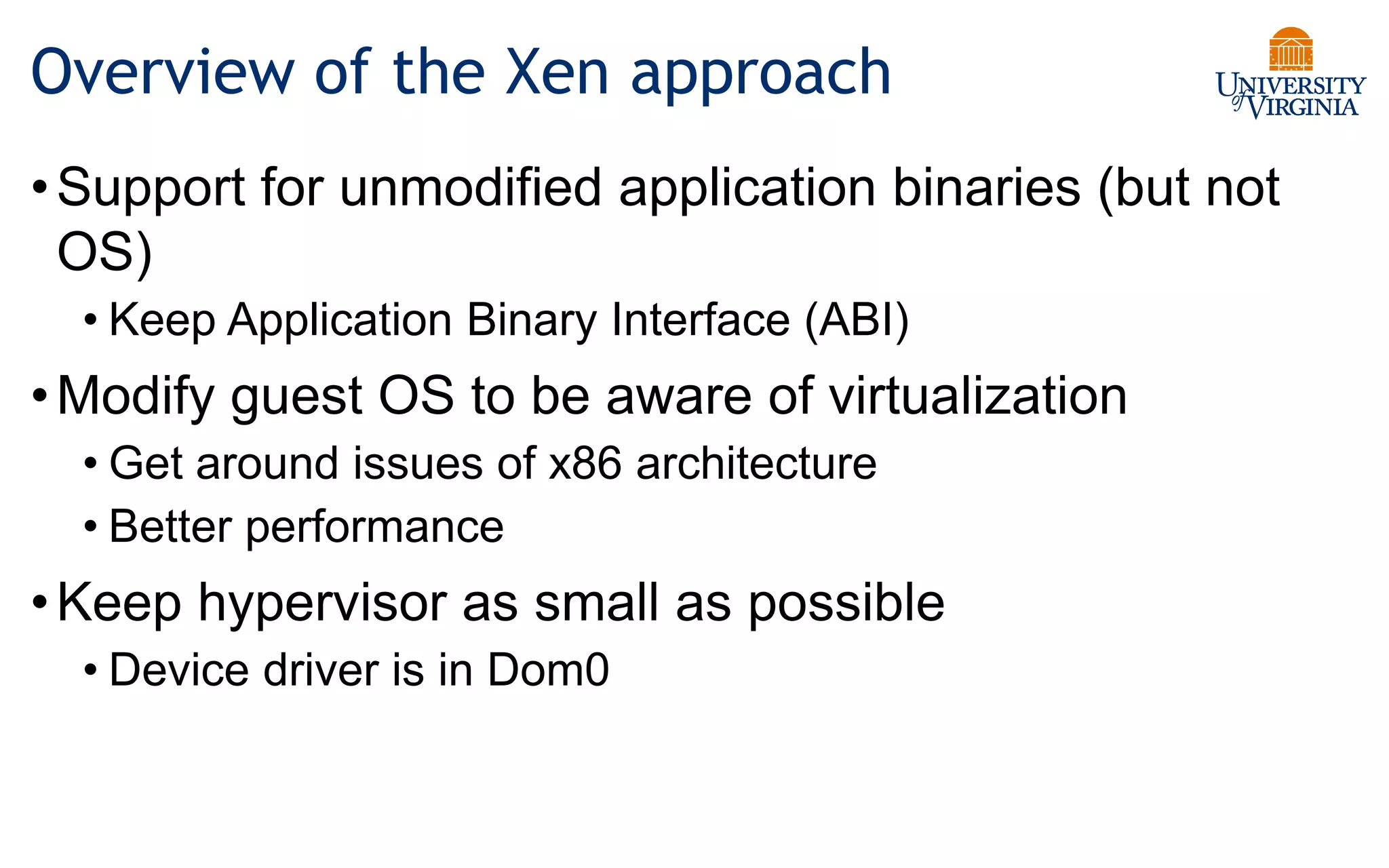
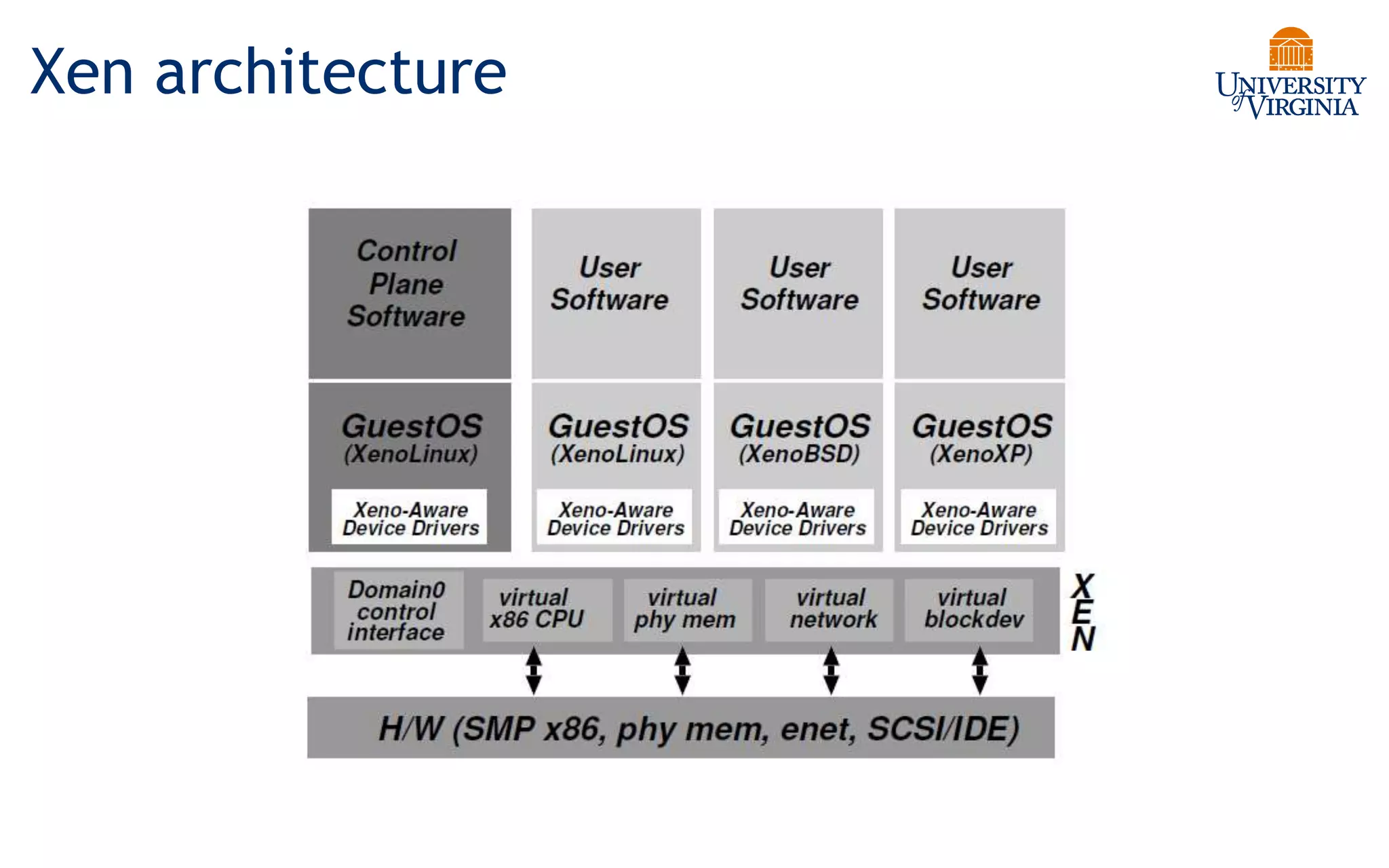
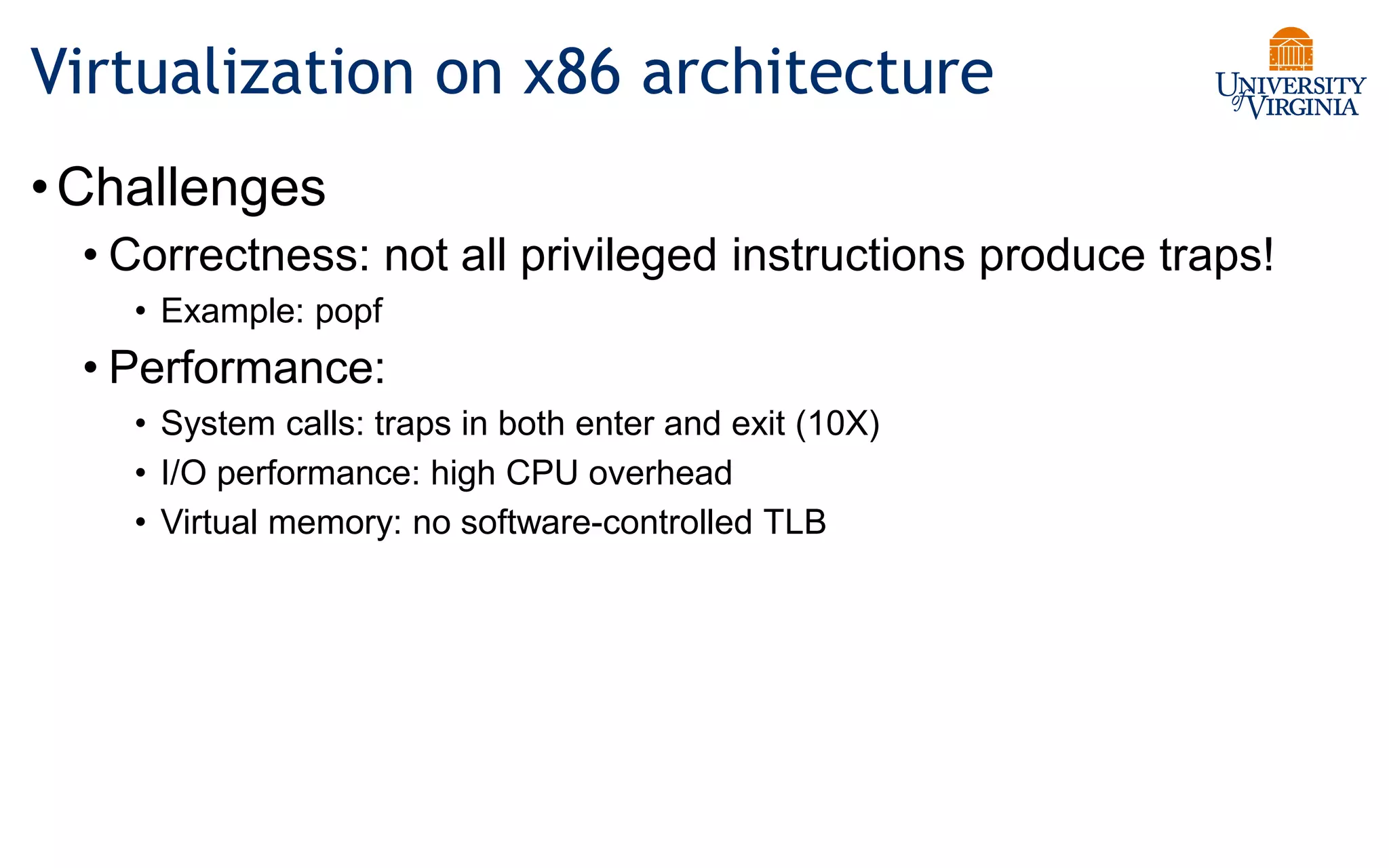

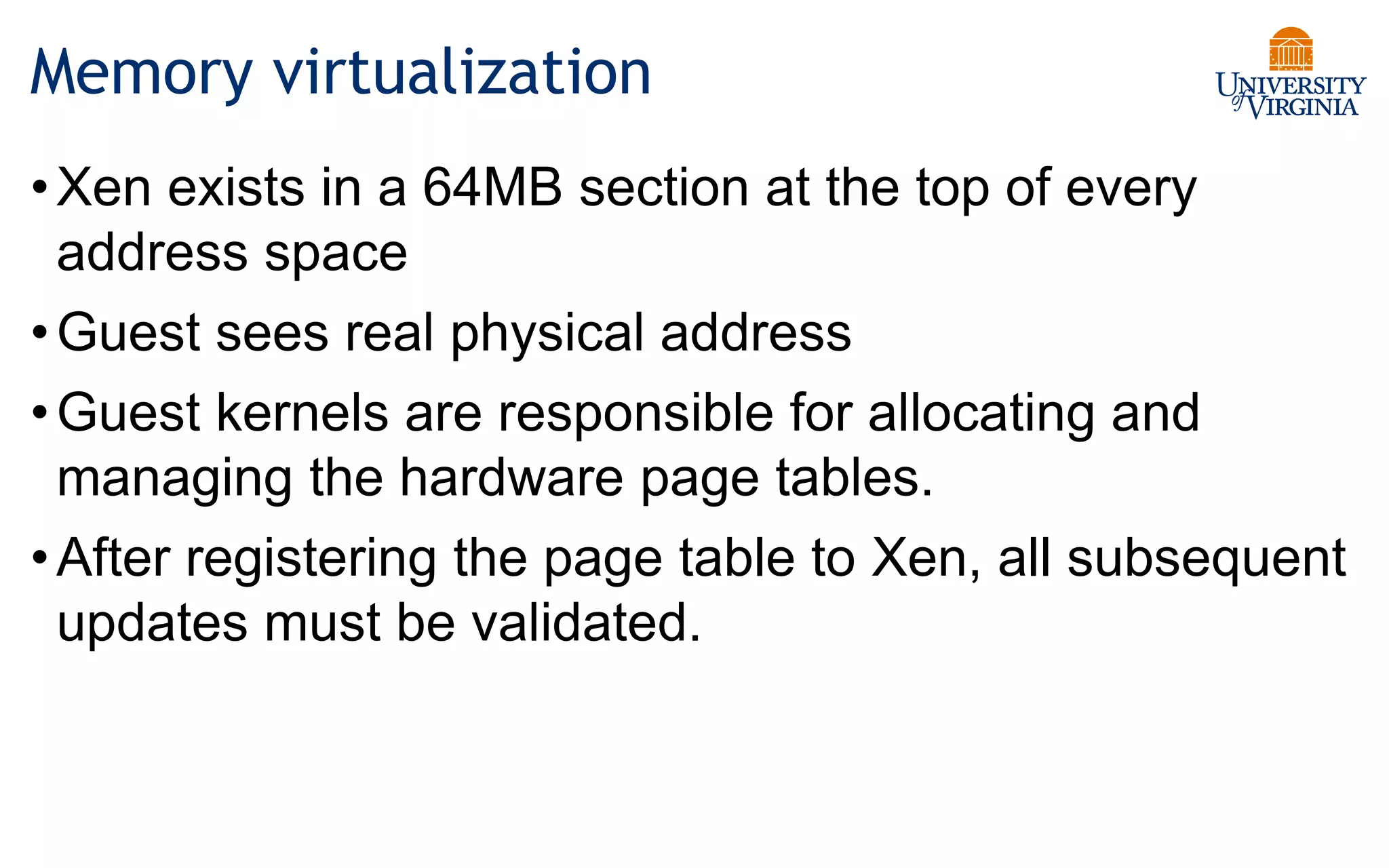
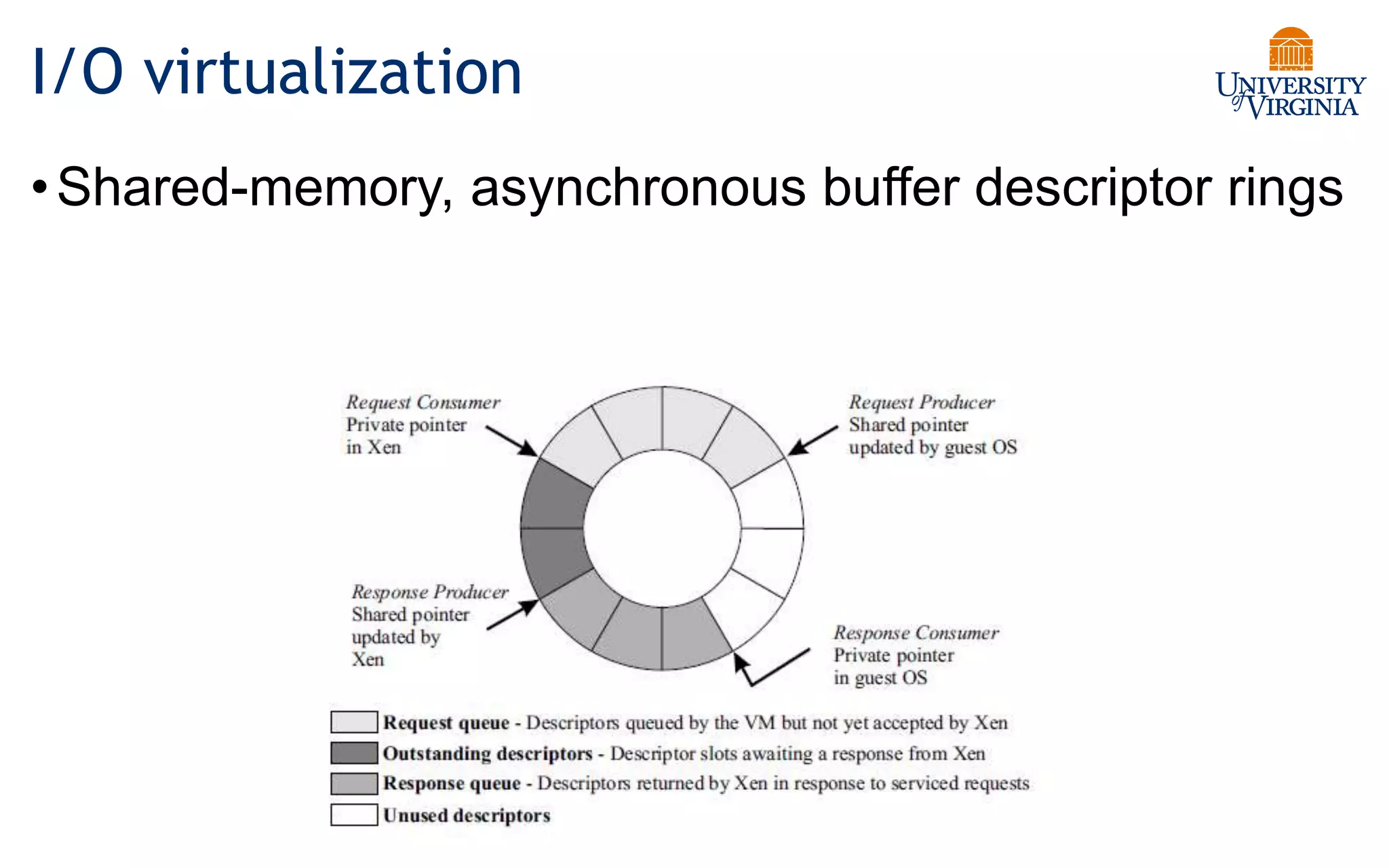




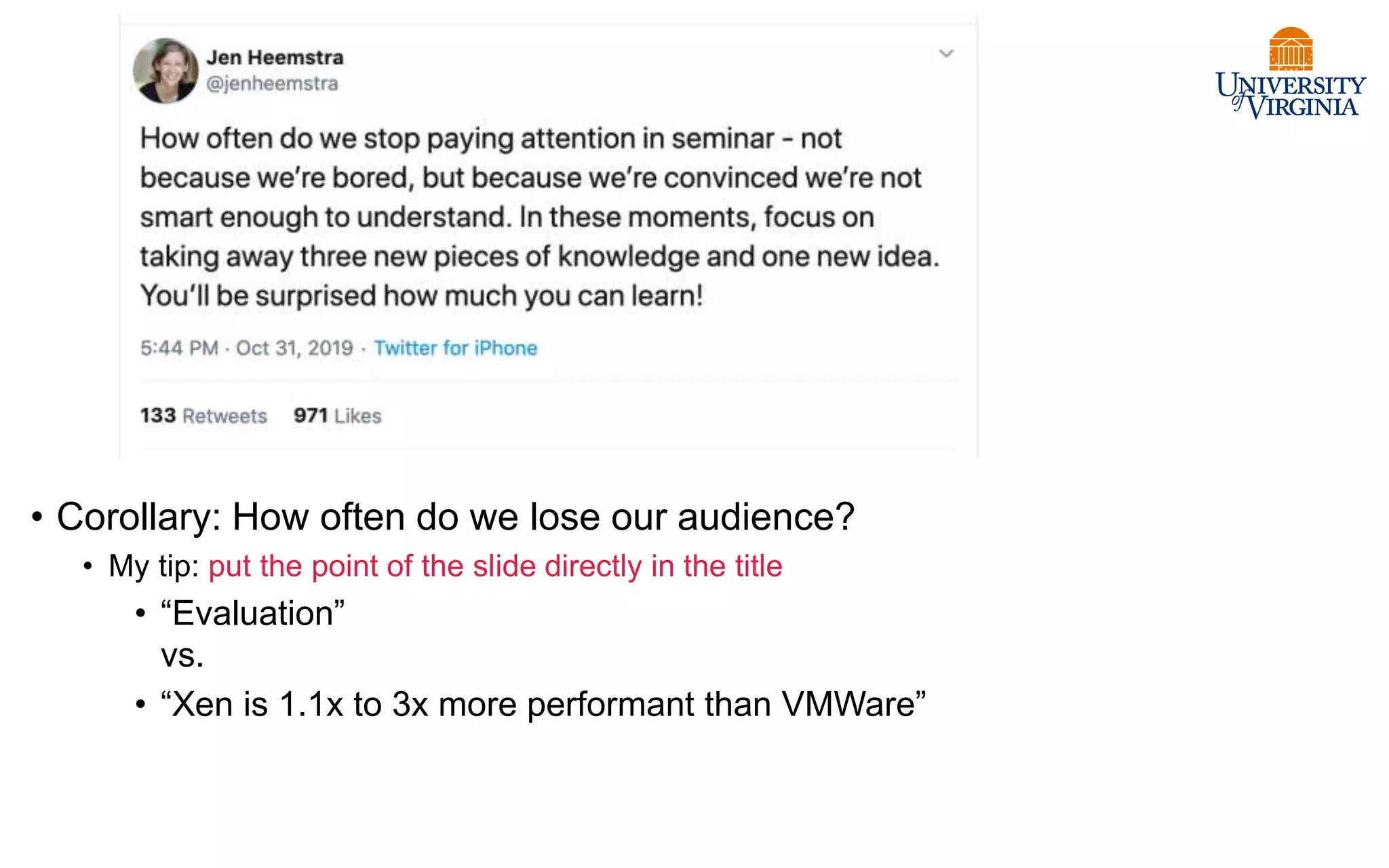

![IA Protection Rings (CPL)
• Actually, IA has four protection
levels, not two (kernel/user).
• IA/X86 rings (CPL)
• Ring 0 – “Kernel mode” (most
privileged)
• Ring 3 – “User mode”
• Ring 1 & 2 – Other
• Linux only uses 0 and 3.
• “Kernel vs. user mode”
• Pre-VT Xen modified to run the
guest OS kernel to Ring 1:
reserve Ring 0 for hypervisor.
Increasing Privilege Level
Ring 0
Ring 1
Ring 2
Ring 3
CPU Privilege Level (CPL)
[Fischbach]](https://image.slidesharecdn.com/17-virtualization-220722130952-c51be03c/75/17-virtualization-pptx-34-2048.jpg)
